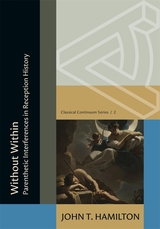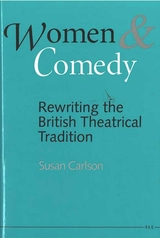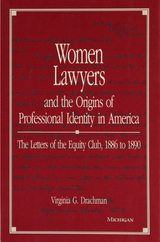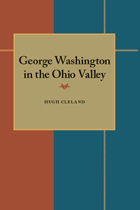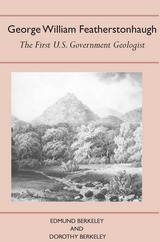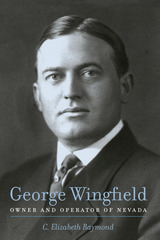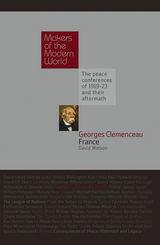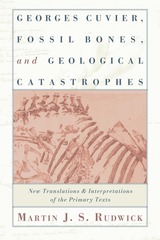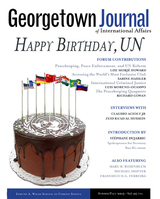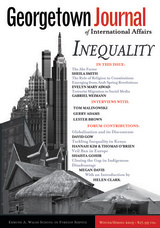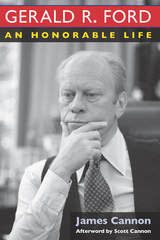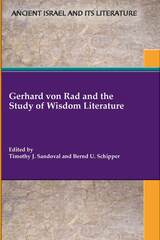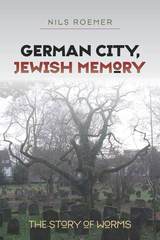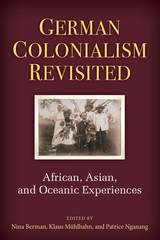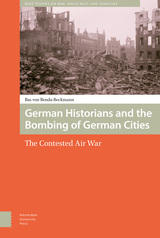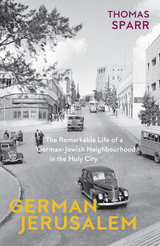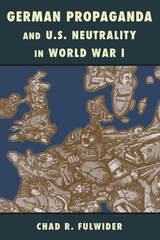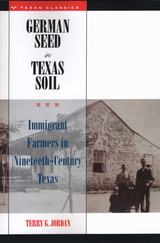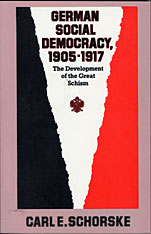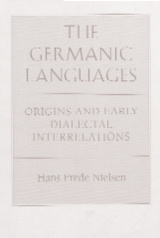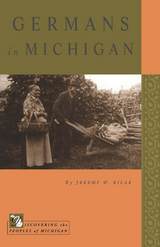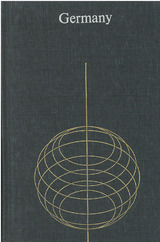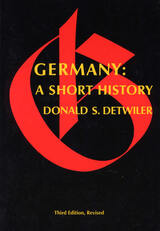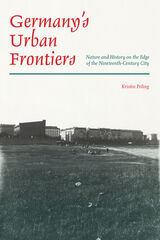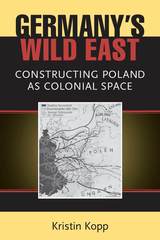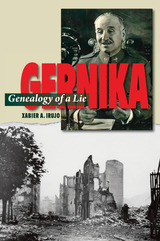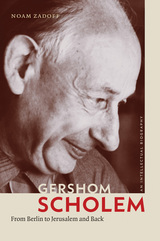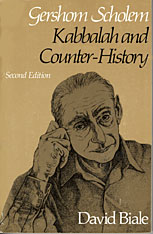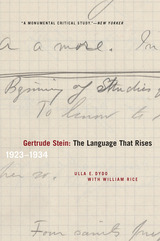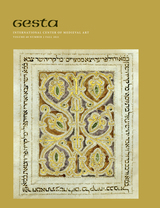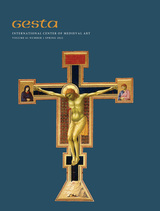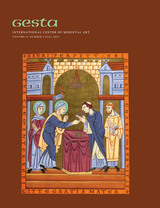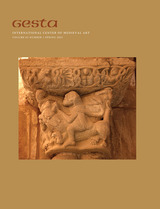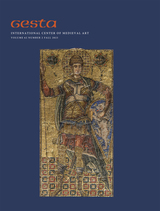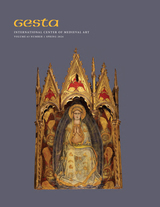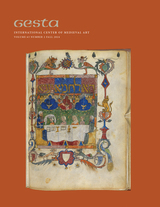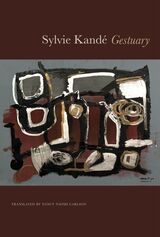George Washington in the Ohio Valley
Hugh Cleland
University of Pittsburgh Press, 1956 This book chronicles Washington's excursions to the Ohio Valley frontier, as a soldier and private citizen. Through newspaper accounts, letters, and the journals of Washington and his contemporaries, we learn much about the man's leadership qualities, military skills, his honor and integrity, and how his life was shaped by his journeys that spanned nearly half a century to what was then known as the Western Country.
 George Washington Slept Here: Colonial Revivals and American Culture, 1876–1986
Karal Ann Marling
Harvard University Press, 1988 George Washington: Revolutionary general, Father of His Country, first president, authentic hero, prime mover in establishing a constitutional government, squire of Mount Vernon, itself a national shrine. The sheer ubiquity of his persona makes him an excellent focus for understanding how Americans from the centennial of the nation's birth to the present have rediscovered their colonial origins and have manipulated what they found for a variety of social, economic, and political purposes. The more modern we become, says Karal Ann Marling, the more desperately we cling to our Washingtons, to our old-fashioned heroes, to an imaginary lost paradise chock-full of colonial furniture.
Marling has pursued the figure of Washington from flea markets to World's Fairs in order to understand his significance in American culture and iconography. Of all American heroes, she points out, Washington is the one most closely tied to artifacts, relics, material possessions, style. She describes the Philadelphia Centennial Exposition of 1876, where the federal government exhibited a scene of camp life at Valley Forge, complete with Washington's coat, pants, and other personal objects that lent a strong domestic flavor to the nascent colonial revival. When the restoration of Mount Vernon was begun in the late nineteenth century, it was financed and directed by women, as was much of the historic preservation of the period. Thanks to these efforts, the American home became the scene of successive waves of a revivalism that is still very alive in the 1980s.
In describing Washington's talismanic importance, Marling shows the efforts of twentieth-century politicians to co-opt his incorruptible image. When Harding wanted to convince Americans of his reliability and probity, he campaigned from the Colonial Revival porch of his house on Mount Vernon Avenue in Marion, Ohio. The Washington image was mined for the campaigns that celebrated Calvin Coolidge's Puritan simplicity and Herbert Hoover's engineering talents, said to be related to George Washington's career as a surveyor; more recently, Ronald Reagan at his second inaugural invoked the vision of the humble general praying in the snow at Valley Forge. The neutral and flexible Washington became whatever people wanted him to be—the decorators' darling, the doyen of the D.A.R., the model citizen held up as an example to unruly children and immigrants.
But Marling's book is about more than George Washington and the different ways in which Americans have made use of their past. In her quest for the unhistorical George, Marling has examined the subculture of American life—magazine fiction, historical romances, movies (both silent and talking), and journalism. She traces the descent of high art into such popular forms as posters, plaques, packages, and billboards, all to illuminate how Washington's iconic meaning has influenced styles and tastes on many levels.
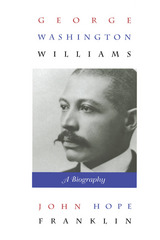 George Washington Williams: A Biography
John Hope Franklin
Duke University Press, 1998 In George Washington Williams, John Hope Franklin reconstructs the life of the controversial, self-made black intellectual who wrote the first history of African Americans in the United States. Awarded the Clarence L. Holte Literary Prize, this book traces Franklin’s forty-year quest for Williams’s story, a story largely lost to history until this volume was first published in 1985. The result, part biography and part social history, is a unique consideration of a pioneering historian by his most distinguished successor. Williams, who lived from 1849 to 1891, had a remarkable career as soldier, minister, journalist, lawyer, politician, freelance diplomat, and African traveler, as well as a historian. While Franklin reveals the accomplishments of this neglected figure and emphasizes the racism that curtailed Williams’s many talents, he also highlights the personal weaknesses that damaged Williams’s relationships and career. Williams led the way in presenting African American history accurately through the use of oral history and archival research, sought to legitimize it as a field of historical study, and spoke out in support of an American Negro Historical Society and as a critic of European imperialism in Africa. He also became erratic and faithless to his family and creditors and died at the age of forty-one, destitute and alienated from family and friends. George Washington Williams is nothing less than a classic biography of a brilliant though flawed individual whose History of the Negro Race in America remains a landmark in African American history and American intellectual history.
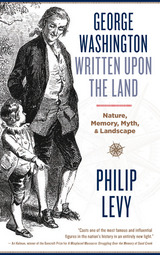 George Washington Written Upon the Land: Nature, Memory, Myth, and Landscape
Philip Levy
West Virginia University Press, 2015 George Washington’s childhood is famously the most elusive part of his life story. For centuries biographers have struggled with a lack of period documentation and an absence of late-in-life reflection in trying to imagine Washington’s formative years. In George Washington Written upon the Land, Philip Levy explores this most famous of American childhoods through its relationship to the Virginia farm where much of it took place. Using approaches from biography, archaeology, folklore, and studies of landscape and material culture, Levy focuses on how different ideas about Washington’s childhood functioned—what sorts of lessons they sought to teach and how different epochs and writers understood the man and the past itself. In a suggestive and far-reaching final chapter, Levy argues that Washington was present at the onset of the Anthropocene—the geologic era when human activity began to have a significant impact on world ecosystems. Interpreting Washington’s childhood farm through the lens of “big” history, he encourages scholars to break down boundaries between science and social science and between human and nonhuman.
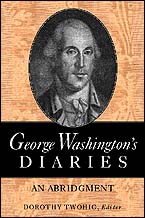 George Washington's Diaries: An Abridgment
George Washington
University of Virginia Press, 1999 CULLED FROM the six volumes of The Diaries of George Washington completed in 1979, this selection of entries chosen by retired Washington Papers editor Dorothy Twohig reveals the lifelong preoccupations of the public and private man.
Washington was rarely isolated from the world during his eventful life. His diary for 1751-52 relates a voyage to Barbados when he was nineteen. The next two accounts concern the early phases of the French and Indian War, in which Washington commanded a Virginia regiment. By the 1760s when Washington's diaries resume, he considered himself retired from public life, but George III was on the British throne and in the American colonies the process of unrest was beginning that would ultimately place Washington in command of a revolutionary army.
Even as he traveled to Philadelphia in 1787 to chair the Constitutional Convention, however, and later as president, Washington's first love remained his plantation, Mount Vernon. In his diary, he religiously recorded the changing methods of farming he employed there and the pleasures of riding and hunting. Rich in material from this private sphere, George Washington's Diaries: An Abridgment offers historians and anyone interested in Washington a closer view of the first president in this bicentennial year of his death.
Reviews
"In March 1785 Washington referred to his work at Mount Vernon as his singular 'amusement,' which is what Donald Jackson and Dorothy Twohig continue to provide readers of Washington's diaries. These volumes stand in welcome contrast to the growing colorlessness that has become the hallmark of too many documentary editions."
--American Historical Review
"The editors have turned the diaries and almanac notes . . . into sources that when placed in their context give us real insight into this most inscrutable of the Founding Fathers."
--Virginia Quarterly Review
"An invaluable guide for historians and, surprisingly, the casual reader interested in Washington, his observations on several trips and . . . comments on some of the military and political affairs of the day. . . . Large sections of the diary. . . give the general reader a fascinating insight to the man."
--Will Molineux in Newport News Daily Press
The Author
Dorothy Twohig recently retired as Editor in Chief of The Papers of George Washington after more than thirty years with the project.
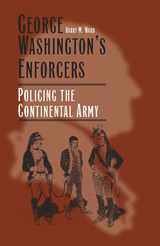 George Washington's Enforcers: Policing the Continental Army
Harry M. Ward
Southern Illinois University Press, 2006 A well-disciplined army was vital to win American independence, but policing soldiers during the Revolution presented challenges. George Washington’s Enforcers: Policing the Continental Army examines how justice was left to the overlapping duties of special army personnel and how an improvised police force imposed rules and regulations on the common soldier. Historian Harry M. Ward describes these methods of police enforcement, emphasizing the brutality experienced by the enlisted men who were punished severely for even light transgressions. This volume explores the influences that shaped army practice and the quality of the soldiery, the enforcement of military justice, the use of guards as military police, and the application of punishment. Washington’s army, which adopted the organization and justice code of the British army, labored under the direction of ill-trained and arrogant officers. Ward relates how the enlisted men, who had a propensity for troublemaking and desertion, not only were victims of the double standard that existed between officers and regular troops but also lacked legal protection in the army. The enforcement of military justice afforded the accused with little due process support. Ward discusses the duties of the various personnel responsible for training and enforcing the standards of behavior, including duty officers, adjutants, brigade majors, inspectors, and sergeant majors. He includes the roles of life guards, camp guards, quarter guards, picket men, and safe guards, whose responsibilities ranged from escorting the commander in chief, intercepting spies and stragglers, and protecting farmers from marauding soldiers to searching for deserters, rounding up unauthorized personnel, and looking for delinquents in local towns and taverns. George Washington’s Enforcers, which includes sixteen illustrations, also addresses the executions of the period, as both ritual and spectacle, and the deterrent value of capital punishment. Ward explains how Washington himself mixed clemency with severity and examines how army policies tested the mettle of this chief disciplinarian, who operated by the dictates of military necessity as perceived at the time.
 George Washington's Final Battle: The Epic Struggle to Build a Capital City and a Nation
Robert P. Watson
Georgetown University Press, 2020 George Washington is remembered for leading the Continental Army to victory, presiding over the Constitution, and forging a new nation, but few know the story of his involvement in the establishment of a capital city and how it nearly tore the United States apart. In George Washington’s Final Battle, Robert P. Watson brings this tale to life, telling how the country's first president tirelessly advocated for a capital on the shores of the Potomac. Washington envisioned and had a direct role in planning many aspects of the city that would house the young republic. In doing so, he created a landmark that gave the fledgling democracy credibility, united a fractious country, and created a sense of American identity. Although Washington died just months before the federal government's official relocation, his vision and influence live on in the city that bears his name. This little-known story of founding intrigue throws George Washington’s political acumen into sharp relief and provides a historical lesson in leadership and consensus-building that remains relevant today. This book will fascinate anyone interested in the founding period, the American presidency, and the history of Washington, DC.
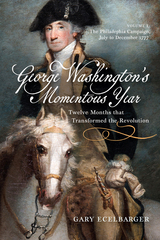 George Washington's Momentous Year: Twelve Months that Transformed the Revolution, Vol. I: The Philadelphia Campaign, July to December 1777
Gary Ecelbarger
Westholme Publishing, 2024 WINNER OF THE 2025 FRAUNCES TAVERN MUSEUM BOOK AWARD
On July 4, 1777, George Washington was so consumed with where the British would strike that he ignored the nation’s first birthday. One year later, Washington created an independence celebration so spectacular that soldiers proudly recalled it in their old age. As historian Gary Ecelbarger explains in George Washington’s Momentous Year: Twelve Months that Transformed the Revolution, it was between these two antithetical anniversaries where the fight for independence under Washington’s leadership changed from a precarious regional struggle to a global conflict. In August 1777, the British landed at Head of Elk, Maryland, and defeated the Continentals at Brandywine, White Horse Tavern, and Paoli, before occupying Philadelphia. Over the next several months, the forces clashed at Germantown, Red Bank, and White Marsh, and in December, Washington and his troops fell back to Valley Forge. Despite the immediacy of the Philadelphia campaign, Washington remained in charge of the entire Continental effort, and welcomed the American victory at Saratoga that secured an alliance with France. In the new year, British forces were ordered back to New York, and as they set out across New Jersey, a newly invigorated American army engaged them at Monmouth Courthouse. This was Washington’s final time leading troops in battle and ended with his Continentals masters of the field. In the first of this history’s two volumes, the author narrates the personalities, decisions, and battles of the Philadelphia campaign, primarily from the perspective of Washington. Based on a fresh analysis of primary sources, the author demonstrates that Washington was an offensive-minded commander seeking avenues of attack during a very mobile campaign. Throughout, we follow the growing relationships between the commander in chief and his “military family,” including well-known personalities such as Alexander Hamilton and Marquis De Lafayette, as well as less-heralded volunteers like, Tench Tilghman, Caleb Gibbs, John Cadwalader, and Joseph Reed. During this period, from July to December 1777, Washington had to juggle logistics for his army as well as those far afield, fend off challenges to his leadership, and direct the greater war effort—all the while preparing to engage enemy forces at his front. The result is a new and compelling look at America’s most famous military figure and his truly momentous campaign.
 George Washington's Momentous Year: Twelve Months that Transformed the Revolution—Vol. 2: Valley Forge to Monmouth, January to July 1778
Gary Ecelbarger
Westholme Publishing, 2025 The second volume of George Washington’s Momentous Year picks up where Volume 1 concluded, in the wake of the Battle of Whitemarsh in early December 1777, with the British army returning to Philadelphia and French officials opening formal negotiations with American diplomats, primarily as a result of what they felt was a surprising and successful Philadelphia campaign by George Washington. Washington’s army now moved westward, across the Schuylkill River, to the most iconic encampment in American history: Valley Forge. Here the story is new and dynamic. Gary Ecelbarger’s original research revises the history of this crucial period, presenting for the first time Washington’s aggressive plan to attack Philadelphia soon after arriving at Valley Forge and the fact that the encamped army was much larger than previously understood. During this time, Washington confronted challenges to his military authority while deftly solving crises of supply and recruitment. With the aid of Baron von Steuben, he established and trained the first American professional army. Following the Valley Forge encampment, the author takes the reader with the reinvigorated Continental army as it marches across the Schuylkill and Delaware Rivers and into New Jersey to confront Sir Henry Clinton’s crown forces on their way from Philadelphia to New York City. Having ordered an advance corps of veterans to engage the British, they make contact at Monmouth Courthouse near Freehold, New Jersey. As Washington approaches the action, he confronts thousands of his troops retreating around him. In one of the most stirring events of the Revolution, Washington is able to rally his men, reclaim the battlefield and achieve a hard-fought victory. The battle gave notice to the British that the American army would be a formidable foe going forward.
This engrossing history of the most significant twelve months of the American Revolution enables the reader to understand and appreciate the astounding accomplishment of George Washington and his military aides: the simultaneous emergence of a new, capable army and a strategy that would win the War for Independence.
George William Featherstonhaugh: The First U.S. Government Geologist
Edmund Berkeley and Dororthy Berkeley
University of Alabama Press, 1988 "U.S. historians can read this book with considerable profit for the details it offers; general readers can enjoy it as a straightforward and informative biography." — Choice "For anyone interested in the history of American geology, knowledge of G. W. Featherstonhaugh (1780-1866) is both essential and hard to obtain. He was the force behind the first railroad in America; a pioneer in scientific agriculture; an essayist, poet, and novelist; a lobbyist; a linguist; and a daring diplomat who saved the king and queen of France from certain death. [Yet] his strongest tie was with the geology. [This] biography is interesting, well researched and well written. It is a balanced study of a complex man who did so much work and generated such controversy."
—Earth Sciences History
George Wingfield: Owner And Operator Of Nevada
C. Elizabeth Raymond
University of Nevada Press, 2013 Banker, hotel owner, and political powerhouse George Wingfield was a significant figure in Nevada history. He was influential in developing Reno's gambling-and-divorce-related tourism. Raymond's biography depicts the man and his times, from his birth in Arkansas in 1876 until his death in Reno in 1959. Wilbur S. Shepperson Series in History and Humanities.
 Georges Bataille: A Critical Introduction
Benjamin Noys
Pluto Press, 2000 This is a guide to the life and work of the French intellectual Georges Bataille, best known as the author of the celebrated erotic novel, The Story of the Eye. Benjamin Noys introduces Bataille as a writer out of step with the dominant intellectual trends of his day - surrealism and existentialism - and shows that it was his very marginality that accounted in large part for his subsequent importance for the post-structuralists and the counterculture, in Europe and in the United States.
Treating Bataille's work as a whole rather than focusing, as other studies have done, on aspects of his work (i.e. as social theory or philosophy), Noys' study is intended to be sensitive to the needs of students new to Bataille's work while at the same time drawing on the latest research on Bataille to offer new interpretations of Bataille's oeuvre for more experienced readers. This is the first clear, introductory reading of Bataille in English - challenging current reductive readings, and stressing the range of disciplines affected by Bataille's work, at a time when interest in Bataille is growing.
 Georges Bigot and Japan, 1882-1899: Satirist, Illustrator and Artist Extraordinaire
Christian Polak
Amsterdam University Press, 2018 Incorporating over 250 illustrations, this is the first comprehensive study in English of French artist and caricaturist George Ferdinand Bigot (1860-1927) who, during the last two decades of the nineteenth century, was renowned in Japan but barely known in his own country. Even today, examples of his cartoons appear in Japanese school textbooks. Inspired by what he saw of Japanese culture and way of life at the Paris Exposition Universelle in 1878, Bigot managed to find his way to Japan in 1882 and immediately set about developing his career as an artist working in pen and ink, watercolours and oils. He also quickly exploited his talent as a highly skilled sketch artist and cartoonist. His output was prodigious and included regular commissions from The Graphic and various Japanese as well as French journals. He left Japan in 1899, never to return. The volume includes a full introduction of the life, work and artistry of Bigot by Christian Polak, together with an essay by Hugh Cortazzi on Charles Wirgman, publisher of Japan Punch. Wirgman was Bigot’s ‘predecessor’ and friend (he launched his own satirical magazine Tôbaé in 1887, the year Japan Punch closed). Georges Bigot and Japan also makes a valuable contribution to Meiji Studies and the history of both Franco- and Anglo-Japanese relations, as well as the role of art in modern international relations.
Georges Clemenceau: France
David Watson
Haus Publishing, 2010 The Anglo-Saxon view of Georges Clemenceau (1841-1929) is based on John Maynard Keynes's misjudged caricature, that he had imposed a treaty that was harsh and oppressive of Germany. French critics' view, however, is that he had been too lenient, and left Germany in a position to challenge the treaty. In fact the treaty was a just settlement, and it could have been maintained. The failure was not in the terms of the treaty but in the subsequent failure to insist on maintaining them in the face of German resistance.
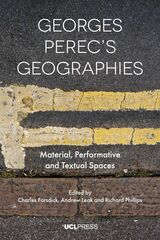 Georges Perec's Geographies: Material, Performative and Textual Spaces
Edited by Charles Forsdick, Andrew Leak, and Richard Phillips
University College London, 2019 Georges Perec (1936–82) was one of the most inventive and original writers of the twentieth century. A fascinating aspect of his work as a novelist, filmmaker, and essayist is its intrinsically geographical nature. With many major projects on space and place, Perec’s writing speaks to a variety of geographical, urban, and architectural concerns—both in a substantive way, including a focus on cities, streets, and homes, and in a methodological way, as in his experiments with urban observation and exploration.
Georges Perec’s Geographies explores Perec’s geographical interests. The book is divided into two parts: Part I, “Perec’s Geographies,” explores space and place within Perec’s films, radio plays, and literature, from descriptions of actual streets to the fictional places within his work. Part II, “Perecquian Geographies,” explores geography in works directly inspired by Perec, including writing, photographs and photo essays, soundscapes, theater, and dance. Extending Perecquian criticism beyond literary and French studies to disciplines including geography, urban studies, and architecture, Georges Perec’s Geographies offers a complete and systematic examination that will be of interest not only to Perec scholars but also to students and researchers across these subjects.
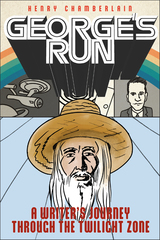 George's Run: A Writer's Journey through the Twilight Zone
Henry Chamberlain
Rutgers University Press, 2023 George Clayton Johnson was an up-and-coming short story writer who broke into Hollywood in a big way when he co-wrote the screenplay for Ocean’s Eleven. More legendary works followed, including Logan’s Run and classic scripts for shows like The Twilight Zone and Star Trek. In the meantime, he forged friendships with some of the era’s most visionary science fiction writers, including Ray Bradbury, Theodore Sturgeon, Richard Matheson, and Rod Serling.
Later in life, Johnson befriended comics journalist and artist Henry Chamberlain, and the two had long chats about his amazing life and career. Now Chamberlain pays tribute to his late friend in the graphic novel George’s Run, which brings Johnson’s creative milieu to life in vividly illustrated color panels. The result feels less like reading a conventional biography and more like sitting in on an intimate conversation between friends as they recollect key moments in pop culture history, as well as the colorful band of writers known as the “Rat Pack of Science Fiction.”
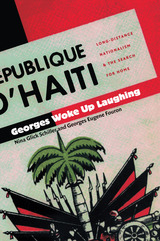 Georges Woke Up Laughing: Long-Distance Nationalism and the Search for Home
Nina Glick Schiller and Georges Eugene Fouron
Duke University Press, 2001 Combining history, autobiography, and ethnography, Georges Woke Up Laughing provides a portrait of the Haitian experience of migration to the United States that illuminates the phenomenon of long-distance nationalism, the voicelessness of certain citizens, and the impotency of government in an increasingly globalized world. By presenting lively ruminations on his life as a Haitian immigrant, Georges Eugene Fouron—along with Nina Glick Schiller, whose own family history stems from Poland and Russia—captures the daily struggles for survival that bind together those who emigrate and those who stay behind. According to a long-standing myth, once emigrants leave their homelands—particularly if they emigrate to the United States—they sever old nationalistic ties, assimilate, and happily live the American dream. In fact, many migrants remain intimately and integrally tied to their ancestral homeland, sometimes even after they become legal citizens of another country. In Georges Woke Up Laughing the authors reveal the realities and dilemmas that underlie the efforts of long-distance nationalists to redefine citizenship, race, nationality, and political loyalty. Through discussions of the history and economics that link the United States with countries around the world, Glick Schiller and Fouron highlight the forces that shape emigrants’ experiences of government and citizenship and create a transborder citizenry. Arguing that governments of many countries today have almost no power to implement policies that will assist their citizens, the authors provide insights into the ongoing sociological, anthropological, and political effects of globalization. Georges Woke up Laughing will entertain and inform those who are concerned about the rights of people and the power of their governments within the globalizing economy. “In my dream I was young and in Haiti with my friends, laughing, joking, and having a wonderful time. I was walking down the main street of my hometown of Aux Cayes. The sun was shining, the streets were clean, and the port was bustling with ships. At first I was laughing because of the feeling of happiness that stayed with me, even after I woke up. I tried to explain my wonderful dream to my wife, Rolande. Then I laughed again but this time not from joy. I had been dreaming of a Haiti that never was.”—from Georges Woke Up Laughing
Georgetown at Two Hundred: Faculty Reflections on the University's Future
William C. McFadden, SJ
Georgetown University Press, 1990 In this book, seventeen faculty members and administrators attempted (in 1989) to answer the fundamental question: How does a university like Georgetown maintain and develop its Catholic and Jesuit identity while actively engaging in the often conflicting political, social, and religious debates that America must urgently conduct today?
 The Georgetown Companion to Interreligious Studies
Lucinda Mosher, Editor
Georgetown University Press, 2022 A comprehensive collection provides guidance and deep insight from a variety of experts in this emerging field The rapidly developing field of interreligious studies fosters scholarship engaging two or more religious traditions at a time. Inherently multidisciplinary, the field brings the academic consideration of religions into conversation with the humanities and social sciences, employing relational, intersectional, experiential, and dialogical methodologies as it examines the interrelationship of individuals and groups with differing alignments toward religion. Edited by Lucinda Mosher, The Georgetown Companion to Interreligious Studies features an international roster of practitioners of or experts on Judaism, Christianity, Islam, Hinduism, Jainism, Sikhism, Buddhism, Ruism, Humanism, and African, North American, and South American Indigenous lifeways. Each author offers a unique perspective on the nature of this emerging discipline. This companion provides fifty thought-provoking chapters on the history, priorities, challenges, distinguishing pedagogies, and practical applications of interreligious studies. Anyone who seeks a deeper appreciation of this relatively new academic field will find it useful as a textbook or research resource.
 The Georgetown Dictionary of Iraqi Arabic: Arabic-English, English-Arabic
Mohamed Maamouri, Editor
Georgetown University Press The Georgetown Dictionary of Iraqi Arabic is a modernized, up-to-date dialectal Arabic language resource that promotes successful daily communication with native Arabic speakers. Students, teachers, and scholars of Arabic will welcome this dramatically overhauled edition of one of the only Arabic dialect dictionaries of its kind—establishing a new standard in Arabic reference. This comprehensive reference focuses on conversation, emphasizing the colloquial speech of educated residents of Baghdad. The dictionary assumes familiarity with the Arabic alphabet, the standard organization of Arabic dictionaries along the triconsonantal root system, and the formation of Arabic verb forms. • Approximately 17,500 Iraqi Arabic entries
• Approximately 10,750 English-to-Iraqi entries
• An increase of more than 30 percent in terms that reflect current vocabulary and usage
• Provides conventional Arabic script for main entries, and organized by root, as standard for Arabic dictionaries
• Employs International Phonetic Alphabet (IPA) for all terms to demonstrate correct pronunciation
• Offers extensive example sentences to illustrate how the Iraqi words are used
• Indicates relevant parts of speech for each Iraqi entry and subentry
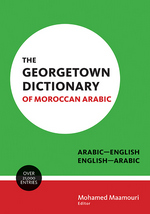 The Georgetown Dictionary of Moroccan Arabic: Arabic-English, English-Arabic
Mohamed Maamouri Editor,
Georgetown University Press The Georgetown Dictionary of Moroccan Arabic is a modernized language resource for learning and studying Moroccan Arabic that updates the pioneering Arabic dialect dictionary published by Georgetown University Press over fifty years ago. Students, teachers, and scholars of Arabic will welcome this upgraded resource, which includes key Moroccan words, to grow their vocabulary and learn more about Moroccan Arabic language and culture. Created using the latest computational linguistics approaches and tools, this etymological dictionary represents a new generation of Arabic language reference materials designed to help English speakers gain proficiency in colloquial Arabic dialects. Scholars and linguists are certain to find this complex and challenging dialect informative and useful in discussions of Arabic dialectology. • Features over 13,000 Moroccan Arabic–English entries and 8,000 English–Arabic entries • Provides entries in Arabic script and organized by root, as is standard in Arabic dictionaries • Employs International Phonetic Alphabet (IPA) for all terms to demonstrate correct pronunciation and allow comparison across dialects • Includes borrowed words commonly used in Moroccan Arabic, such as those from French, Spanish, and Amazigh • Contains extensive example sentences and an appendix showing the roots of words with prefixes, both to help learners
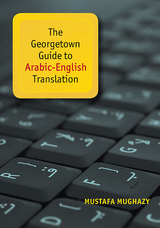 The Georgetown Guide to Arabic-English Translation
Mustafa Mughazy
Georgetown University Press "Translation is like a reverse-engineering process—whereby, say, we might take apart a clock made of metal parts in order to build a functioning replica made entirely of plastic. Our final product will not look the same as the original clock, and it would be impossible to simply copy the designs of its inner workings, because plastic and metals have very different properties. For example, we cannot make small plastic springs or very thin gears of plastic. But these changes do not matter; the only thing that matters is that our replica will tell the time correctly.”
—From the Introduction The Georgetown Guide to Arabic-English Translation is an essential step-by-step, practical manual for advanced learners of Arabic interested in how to analyze and accurately translate nonfiction Arabic texts ranging from business correspondence to textbooks. Mustafa Mughazy, a respected Arabic linguist, presents an innovative, functional approach that de-emphasizes word-for-word translation. Based on the Optimality Theory, it favors remaining faithful to the communicative function of the source material, even if this means adding explanatory text, reconfiguring sentences, paraphrasing expressions, or omitting words. From how to select a text for translation or maintain tense or idiom, to how to establish translation patterns, The Georgetown Guide to Arabic-English Translation is useful both as a textbook and a reference. An invaluable set of appendices offers shortcuts to translate particularly difficult language like abbreviations, collocations, and common expressions in business correspondence, while authentic annotated texts provide the reader opportunities to practice the strategies presented in the book. A must-read for advanced learners of Arabic, this is a book every scholar and graduate-level student will wish to own.
 Georgetown Journal of International Affairs: International Engagement on Cyber II, 2012
William Handel
Georgetown University Press In 2007 Georgetown University established the CyberProject under the auspices of the Institute for Law, Science & Global Security. The CyberProject seeks to hone the Institute’s resources to help policymakers develop a greater understanding of current international cybersecurity issues. On 10 April 2012, the Institute held its second annual international cyber conference entitled, “International Engagement on Cyber: Establishing International Norms & Improved Cyber Security.” Under the direction of the CyberProject and the Institute, we have devoted this second annual special issue of the Georgetown Journal of International Affairs to cyber exclusively, and the challenges that societies face as they seek to establish norms of behavior so all may coexist peacefully in this domain. In the pages that follow, participants from the Institute’s second international cyber conference and other leaders, domestic and foreign, lay out their visions for protecting cyberspace and maintaining its stability. The Georgetown Journal of International Affairs is the official publication of the Edmund A. Walsh School of Foreign Service at Georgetown University. Each issue of the journal provides readers with a diverse array of timely, peer-reviewed content penned by top policymakers, business leaders, and academic luminaries. Annual peer reviewed ‘special editions’ feature collected academic analysis on rapidly changing domains within the arena of international affairs, including the International Engagement on Cyber series.
 Georgetown Journal of International Affairs: International Engagement on Cyber III, 2013
Julia M. Famularo
Georgetown University Press A great deal has transpired in the cyber realm during the past year. These events, particularly the Snowden Affair, have drastically shaped the debate over state power projection and its consequences. Global public discourse previously tended to center upon the Internet as a democratizing force, capable of weakening the control of the nation-state. The Internet transcended national borders and empowered the masses at the expense of traditional power blocks. However, this battle for the control of cyberspace is far from over. The nation-state is attempting to retrench its power in the digital realm, and the forces of centralization are appearing to gain strength in the struggle between diffusion and consolidation. This shift has raised serious questions regarding the responsibilities and limits of government cyber control. State Building on a New Frontier—the third edition of our annual International Engagement on Cyber series—attempts to explore some of these difficult themes. This edition also features articles that deal with the technical side of the cyber discussion, namely attempts to create appropriate standards for continuing infrastructure development. The Georgetown Journal of International Affairs is the official publication of the Edmund A. Walsh School of Foreign Service at Georgetown University. Each issue of the journal provides readers with a diverse array of timely, peer-reviewed content penned by top policymakers, business leaders, and academic luminaries. Annual peer reviewed ‘special editions’ feature collected academic analysis on rapidly changing domains within the arena of international affairs, including the International Engagement on Cyber series.
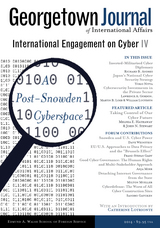 Georgetown Journal of International Affairs: International Engagement on Cyber IV
Azhar Unwala
Georgetown University Press Each spring, the Cyber Project at Georgetown University’s Institute for Law, Science, and Global Security convenes a conference of leading international experts from academia, the private sector, and government to address cutting-edge issues in cybersecurity. This issue begins with a group of articles under the theme A Post-Snowden Cyberspace, describing how Edward Snowden’s revelations directly or indirectly changed the way the global community understands cybersecurity and cyber law. Other topics covered include cyber weapons, cyber deterrence, Japan’s cybersecurity strategy, data protection in the private sector, executive accountability for data breaches, minimum security standards for connected devices, and the problem of underinvestment in cybersecurity. Please note, this special issue is not included in the subscription to the journal. The Georgetown Journal of International Affairs is the official publication of the Edmund A. Walsh School of Foreign Service at Georgetown University. Each issue of the journal provides readers with a diverse array of timely, peer-reviewed content penned by top policymakers, business leaders, and academic luminaries.
 Georgetown Journal of International Affairs: International Engagement on Cyber V
Azhar Unwala
Georgetown University Press This fifth edition in the International Engagement on Cyber series focuses on securing critical infrastructure. The centrality of critical infrastructure in the Obama administration’s recent cybersecurity initiatives demonstrates the timeliness of this topic for greater review and scholarly input. In this manner, articles in this issue uncover the role and extent of international law and norms, public-private cooperation, as well as novel ways of conceptualizing ‘security’ in efforts to improve critical infrastructure cybersecurity. Other pieces provide case studies on the telecommunications, power, and energy sectors to generate an in-depth understanding of specific responses to security concerns in different infrastructure areas. Additional contributions examine regulatory activities in cyberspace, the potential value of cryptocurrency, the evolution of cloud computing, cybersecurity in Brazil, as well as the integration of cyber in the military strategies of Russia, China, and the United States. The diversity of these topics demonstrates the Journal’s continued commitment to pursuing the myriad facets that compromise the field of cyber. Please note, this special issue is not included in the subscription to the journal.
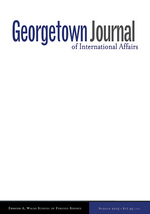 Georgetown Journal of International Affairs: International Engagement on Cyber VI, Fall/Winter 2016, Volume 17, No. 3
Ian Prasad Philbrick
Georgetown University Press The Georgetown Journal of International Affairs has once again partnered with the Cyber Project at Georgetown University’s Institute for Law, Science, and Global Security to publish the sixth special issue of International Engagement on Cyber. This special issue of the journal seeks to uncover timely topics, broaden dialogue, and advance knowledge within the field of cyber. The articles are written by an international group of leading scholars, practitioners, and policymakers. The Forum of this issue evaluates the US Department of Defense’s 2015 Cyber Strategy and its efficacy in meeting cyber threats. Other topics covered in this issue include applying Just War Theory to the cyber capabilities of non-state actors including ISIS and Anonymous, litigating competing perspectives on the establishment of cyber norms, assessing tensions on the Korean peninsula in the cyber domain, and much more. The Georgetown Journal of International Affairs is the official publication of the Edmund A. Walsh School of Foreign Service at Georgetown University. The journal was founded to serve as an academic resource for scholars, business leaders, policy makers, and students of international relations, cultivating a dialogue accessible to those with all levels of knowledge about foreign affairs and international politics. Each issue of the journal provides readers with a diverse array of timely, peer-reviewed content that bridges the gap between the work done by news outlets and that done by traditional academic journals.
 Georgetown Journal of International Affairs: Summer/Fall 2012, Volume 13, No. 2
Sikander Kiani
Georgetown University Press The latest round of leadership changes at the IMF and the World Bank has generated increasingly intense criticism of the tacit Western hold on governance of these institutions. While this dynamic is indicative of global power adjustments, it also signals a paradigm shift in thought about issues and methodology of development and growth. John Maynard Keynes famously noted the influence economists exert on leaders as: “Practical men, who believe themselves to be quite exempt from any intellectual influence, are usually the slaves of some defunct economist.” Perhaps it is time, especially in the field of development, to question the traditional monopoly of economists, and to effectively include scientists, anthropologists, and others to provide collaborative thought leadership. The Forum of this issue brings together leading policy makers, business professionals, and academics to evaluate the changing landscape of international development. New forms of assistance and greater connectivity among development stakeholders have reduced relevance of the traditional role of multilateral or bilateral agents of foreign aid and pillar organizations of the Washington Consensus. These bodies must adapt to an ever-changing world while being constrained by laws and bureaucratic processes. There is also a need to balance the perennial temptation of using official development assistance to promote national agenda with the interests of recipients. To deal with these and similar challenges effectively, the future lies in building networks of hybrid partnerships between governments, individuals, and other stakeholders in development. The Georgetown Journal of International Affairs is the official publication of the Edmund A. Walsh School of Foreign Service at Georgetown University. Each issue of the journal provides readers with a diverse array of timely, peer-reviewed content penned by top policymakers, business leaders, and academic luminaries. The Journal takes a holistic approach to international affairs and features a ‘Forum’ that offers focused analysis on a specific key issue with each new edition of the publication, as well as nine regular sections: Books, Business & Economics, Conflict & Security, Culture & Society, Law & Ethics, A Look Back, Politics & Diplomacy, Science & Technology, and View from the Ground.
 Georgetown Journal of International Affairs: Summer/Fall 2013, Volume 14, No. 2
William Handel
Georgetown University Press In 1950 six nations created the European Coal and Steel Community, laying the foundations for what would later become the European Union. Since then many other regions have integrated and the number of regional organizations has proliferated. Regional organizations are key actors in tackling tough problems, such as protecting human rights, preventing and resolving conflict, strengthening regional cooperation, and promoting economic growth.The purpose of this issue’s Forum, consisting of five articles, is to provide readers with a theoretical and practical overview of key aspects of regional integration and regional organizations. The first two articles provide a theoretical discussion on regional integration, while the following three articles present case studies on regional organizations – the Shanghai Cooperation Organization, the Arctic Council, and ASEAN. These pieces are summarized in Piero Graglia’s introduction. Other contributions to this issue include articles about self-defense groups in Mexico, reconstruction efforts in Afghanistan after the 2014 withdrawal, the Chinese middle class, and Scotland’s referendum on independence. The issue also features interviews with Ambassador Joseph D. Stafford III on his experience in the U.S. Embassy in Tehran during the hostage crisis, Professor Joseph S. Nye on American leadership, and Ambassador-at-Large Melanne Verveer on global women’s issues. In selecting the topics for this issue we have reached beyond the headlines in an effort to explore tough and persistent global problems. The Georgetown Journal of International Affairs is the official publication of the Edmund A. Walsh School of Foreign Service at Georgetown University. Each issue of the journal provides readers with a diverse array of timely, peer-reviewed content penned by top policymakers, business leaders, and academic luminaries. The Journal takes a holistic approach to international affairs and features a ‘Forum’ that offers focused analysis on a specific key issue with each new edition of the publication, as well as nine regular sections: Books, Business & Economics, Conflict & Security, Culture & Society, Law & Ethics, A Look Back, Politics & Diplomacy, Science & Technology, and View from the Ground.
 Georgetown Journal of International Affairs: Summer/Fall 2014, Volume 15, No. 2
Medha Raj and Warren Ryan, Editors. William Handel, Executive Director
Georgetown University Press According to the United Nations, 9.6 billion people will inhabit our planet by 2050. Population growth and movement will have an enormous impact on global dynamics in the twenty-first century, in both the developing world as well as in advanced industrialized societies. In light of this global demographic reality, this issue of the Georgetown Journal of International Affairs focuses on the topic of “Destabilizing Demographics,” exploring the opportunities and challenges presented by dynamic population patterns and structures. Demographic shifts affect multiple facets of international affairs, impacting economies, modifying politics, and reshaping the fabric of our societies. These changes could have catastrophic international consequences if ignored or evaded. However, as this issue’s Forum demonstrates, the future holds promise for those who choose to reorganize on the cusp of significant population transformation. Adaptation as a form of mitigation must be informed by diverse solutions and multi-sectoral cooperation. Consider, for example, the intersection of family planning and climate change, or the connection between gender gaps and crime. Through pragmatic policymaking and international collaboration, seismic demographic change may not necessitate disaster. We round out this issue with articles regarding decidedly twenty-first century concerns: communication, integration, and globalization. Moha Ennaji describes the challenges of Berber language incorporation in Morocco and its significance to democratic reform. Dan Saxon examines the role of human judgment in semi-autonomous weapons use, questioning the ethics of unmanned machines. Andrés Monroy-Hernández and Luis Daniel Palacios analyze the utility, efficacy, and implications of citizen journalism within Mexico’s ongoing drug war. And Lawrence Gostin and Alexandra Phelan explore how, in an increasingly interconnected world, the international community can collectively prevent and control the spread of infectious diseases. The Georgetown Journal of International Affairs is the official publication of the Edmund A. Walsh School of Foreign Service at Georgetown University. Each issue of the journal provides readers with a diverse array of timely, peer-reviewed content penned by top policymakers, business leaders, and academic luminaries. The Journal takes a holistic approach to international affairs and features a ‘Forum’ that offers focused analysis on a specific key issue with each new edition of the publication, as well as nine regular sections: Books, Business & Economics, Conflict & Security, Culture & Society, Law & Ethics, A Look Back, Politics & Diplomacy, Science & Technology, and View from the Ground.
Georgetown Journal of International Affairs: Summer/Fall 2015, Volume 16, No. 2
Anna Newby and Georgia Pelletier, Editors
Georgetown University Press The Georgetown Journal of International Affairs is the official publication of the Edmund A. Walsh School of Foreign Service at Georgetown University. Each issue of the journal provides readers with a diverse array of timely, peer-reviewed content penned by top policymakers, business leaders, and academic luminaries. The theme of this issue will be a look at the United Nations past, present, and future, to commemorate its 70th anniversary. The secondary theme will be global development.
Georgetown Journal of International Affairs: Summer/Fall 2016, Volume 17, No. 2
Margaret Schaack
Georgetown University Press The Georgetown Journal of International Affairs is the official publication of the Edmund A. Walsh School of Foreign Service at Georgetown University. Each issue of the journal provides readers with a diverse array of timely, peer-reviewed content penned by top policymakers, business leaders, and academic luminaries.
Georgetown Journal of International Affairs: Summer/Fall 2017, Volume 18, No. 2
Tom Hoffecker
Georgetown University Press The Georgetown Journal of International Affairs is the official publication of the Edmund A. Walsh School of Foreign Service at Georgetown University. Founded to serve as an academic resource for scholars, business leaders, policymakers, and students of international relations alike, the journal cultivates a dialogue accessible to those with varying levels of knowledge about foreign affairs and international politics.
 Georgetown Journal of International Affairs: Winter/Spring 2013, Volume 14, No. 1
William Handel
Georgetown University Press The international system and the individual nation states that comprise it face crucial decisions regarding both the means and methods employed to supply energy to the globe’s seven billion human inhabitants. Indeed, there are few issues of public policy with as far-reaching implications as those related to energy production, consumption, distribution, and conservation. The extent to which fluctuations in price and supply of this diverse group of resources can have a dramatic impact upon the industry and livelihood of the entire global population cannot be overstated. The Future of Energy seeks to serve as a primer for increasing public dialogue about this incredibly important topic, presenting a diverse array of arguments on issues spanning the gamut of relevance to the current global schema. Resource policies greatly impact the international sphere in economic, political, social, and security contexts and this issue will attempt to demonstrate how these fields of study and practice collide when energy is concerned. The Georgetown Journal of International Affairs is the official publication of the Edmund A. Walsh School of Foreign Service at Georgetown University. Each issue of the journal provides readers with a diverse array of timely, peer-reviewed content penned by top policymakers, business leaders, and academic luminaries. The Journal takes a holistic approach to international affairs and features a ‘Forum’ that offers focused analysis on a specific key issue with each new edition of the publication, as well as nine regular sections: Books, Business & Economics, Conflict & Security, Culture & Society, Law & Ethics, A Look Back, Politics & Diplomacy, Science & Technology, and View from the Ground.
 Georgetown Journal of International Affairs: Winter/Spring 2014, Volume 15, No. 1
Medha Raj
Georgetown University Press This issue of the Georgetown Journal of International Affairs focuses on the topic of “Social Media & Social Activism.” While the jury is still out on the degree to which social media has impacted traditional activism, these evolving technologies undoubtedly have transformed modern social movements. Still, we do not wish to suggest that the causal link follows only one direction. Indeed, it will be interesting to observe what future effects social activism will have on the information technology industry as it grapples with the increasing complexities associated with doing business globally—across cultures and government types—in a sector where national laws differ greatly and where international norms are ill-defined or nonexistent. This issue’s Forum considers responses taken and methods employed by major stakeholders, from grassroots activists to state governments to multinational information technology companies. The Georgetown Journal of International Affairs is the official publication of the Edmund A. Walsh School of Foreign Service at Georgetown University. Each issue of the journal provides readers with a diverse array of timely, peer-reviewed content penned by top policymakers, business leaders, and academic luminaries. The Journal takes a holistic approach to international affairs and features a ‘Forum’ that offers focused analysis on a specific key issue with each new edition of the publication, as well as nine regular sections: Books, Business & Economics, Conflict & Security, Culture & Society, Law & Ethics, A Look Back, Politics & Diplomacy, Science & Technology, and View from the Ground.
Georgetown Journal of International Affairs: Winter/Spring 2015, Volume 16, No. 1
Anna Newby
Georgetown University Press The Georgetown Journal of International Affairs is the official publication of the Edmund A. Walsh School of Foreign Service at Georgetown University. Each issue of the journal provides readers with a diverse array of timely, peer-reviewed content penned by top policymakers, business leaders, and academic luminaries. The Journal takes a holistic approach to international affairs and features a ‘Forum’ that offers focused analysis on a specific key issue with each new edition of the publication, as well as nine regular sections: Books, Business & Economics, Conflict & Security, Culture & Society, Law & Ethics, A Look Back, Politics & Diplomacy, Science & Technology, and View from the Ground.
Georgetown Journal of International Affairs: Winter/Spring 2016, Volume 17, No. 1
Mike Fox
Georgetown University Press The Georgetown Journal of International Affairs is the official publication of the Edmund A. Walsh School of Foreign Service at Georgetown University. Each issue of the journal provides readers with a diverse array of timely, peer-reviewed content penned by top policymakers, business leaders, and academic luminaries. In this issue, the Forum section addresses the plight of international refugees, questions about migration and cultural integration, and assylum policy. Other topics addressed in this issue include US-Iran relations, corruption in Indonesia, Chinese direct investment in Africa, and much more.
 Georgetown Journal of International Affairs: Winter/Spring 2017, Volume 18, No. 1
Margaret Schaack
Georgetown University Press The Georgetown Journal of International Affairs is the official publication of the Edmund A. Walsh School of Foreign Service at Georgetown University. Founded to serve as an academic resource for scholars, business leaders, policymakers, and students of international relations alike, the journal cultivates a dialogue accessible to those with varying levels of knowledge about foreign affairs and international politics. Each volume year the journal provides readers with three issues featuring an array of timely, peer-reviewed content that bridges the gap between the work performed by news outlets and that by more traditional academic journals. The first two issues feature a section titled "Forum" that offers focused analysis on a specific key issue, as well as eight regular sections: Books, Business & Economics, Conflict & Security, Culture & Society, Dialogues, Law & Ethics, Politics & Diplomacy, and Science & Technology. The third is a special issue, International Engagement on Cyber. Issue 18.1’s Forum theme is the "global commons," with articles on the Internet as a global public good, the implications of military and security uses of outer space, and international water management challenges.
 A Georgetown Life: The Reminiscences of Britannia Wellington Peter Kennon of Tudor Place
Grant S. Quertermous, Editor
Georgetown University Press, 2020 An invaluable primary resource for understanding nineteenth-century America. As a Georgetown resident for nearly a century, Britannia Wellington Peter Kennon (1815 – 1911) was close to the key political events of her time. Born into the prominent Peter family, Kennon came into contact with the many notable historical figures of the day who often visited Tudor Place, her home for over ninety years. Now published for the first time, the record of her experiences offers a unique insight into nineteenth-century American history. Housed in the Tudor Place archives, "The Reminiscences of Britannia Wellington Peter Kennon" is a collection of Kennon’s memories solicited and recorded by her grandchildren in the 1890s. The text includes Kennon’s memories of her mother Martha Custis Peter and spending time at Mount Vernon with her grandparents George and Martha Washington. It also includes her recollections of childhood in Georgetown, life during the Civil War, the people enslaved at Tudor Place, and daily life in Washington, DC. Edited by Grant Quertermous, this richly illustrated and annotated edition gives readers a greater appreciation of life in early Georgetown. It includes a guide to the city's streets then and now, a detailed family tree, and an appendix of the many people Britannia encountered—a who's who of the period. Readers will also find Britannia's narrative an essential companion to the incredible collection of objects preserved at Tudor Place. Notable for both its breadth and level of detail, A Georgetown Life brings a new dimension to the study of nineteenth-century America.
Georgetown University Round Table on Languages and Linguistics (GURT) 1994: Educational Linguistics, Cross-Cultural Communication, and Global Interdependence
James E. Alatis, Editor
Georgetown University Press The essays in this volume explore communication across cultures using an interdisciplinary approach to language teaching and learning, mediated by the growing field of educational linguistics. Topics include the use of English as a medium of wider communication and the growth of national varieties of English throughout the world. An international array of distinguished contributors includes scholars from China, Great Britain, Hong Kong, India, Israel, Nigeria, Singapore, Taiwan, Ukraine, and the United States. This collection suggests that language diversity is a unifying force in a globally interdependent world.
Georgetown University Round Table on Languages and Linguistics (GURT) 1996: Linguistics, Language Acquisition, and Language Variation: Current Trends and Future Prospects
James E. Alatis, Editor
Georgetown University Press This volume examines linguistics, language acquisition, and language variation, emphasizing their implications for teacher education and language education. A majority of the essays consider issues in second language acquisition, dealing specifically with learners and instructors, or concentrating on the larger social and societal context in which learning and acquisition occur. Topics highlighted include the current and often controversial debate over bilingual education, language variation, and the past, present, and future role of linguistics in language pedagogy.
 Georgetown University Round Table on Languages and Linguistics (GURT) 2000: Linguistics, Language, and the Professions: Education, Journalism, Law, Medicine, and Technology
James E. Alatis, Heidi E. Hamilton, and Ai-Hui Tan, Editors
Georgetown University Press The 2000 Georgetown University Round Table on Languages and Linguistics brought together distinguished linguists from around the globe to discuss applications of linguistics to important and intriguing real-world issues within the professions. With topics as wide-ranging as coherence in operating room communication, involvement strategies in news analysis roundtable discussions, and jury understanding of witness deception, this resulting volume of selected papers provides both experts and novices with myriad insights into the excitement of cross-disciplinary language analysis. Readers will find—in the words of one contributor—that in such cross-pollination of ideas, "there's tremendous hope, there's tremendous power and the power to transform."
 Georgetown University Round Table on Languages and Linguistics (GURT) 2001: Linguistics, Language, and the Real WorldDiscourse and Beyond
Deborah Tannen and James E. Alatis, Editors
Georgetown University Press GURT is nationally and internationally recognized as one of the world's star gatherings for scholars in the fields of language and linguistics. In 2001, the best from around the world in the disciplines of anthropological linguistics and discourse analysis meet to present and share the latest research on linguistic analysis and to address real-world contexts in private and public domains. The result is this newest, invaluable 2001 edition of the Georgetown University Round Table on Languages and Linguistics. This volume brings together the plenary speakers only, all leaders in their fields, showcasing discourse contexts that range from medical interactions to political campaigns, from classroom discourse and educational policy to current affairs, and to the importance of everyday family conversations. The contributors expand the boundaries of discourse to include narrative theory, music and language, laughter in conversation, and the ventriloquizing of voices in dialogue. Frederick Erickson explores the musical basis of language in an elementary school classroom; Wallace Chafe analyzes laughter in conversation. William Labov examines narratives told to South Africa's Truth and Reconciliation Commission, while Deborah Schiffrin compares multiple accounts of Holocaust narratives, and Alessandro Duranti considers competing speaker and audience interpretations during a political candidate's campaign tour. Robin Lakoff uncovers contrasting narratives shared by different cultural groups with respect to such current events as the O.J. Simpson trial. Deborah Tannen examines the integration of power and connection in family relationships, while Heidi Hamilton considers accounts that diabetic patients give their doctors. Shirley Brice Heath looks at discourse strategies used by policymakers to deny research findings, and G. Richard Tucker and Richard Donato report on a successful bilingual program.
 Georgetown's Second Founder: Fr. Giovanni Grassi's News on the Present Condition of the Republic of the United States of North America
Giovanni Grassi. Roberto Severino, Translator. Foreword byRobert Emmett Curran
Georgetown University Press, 2023 Observations on the new American republic by an early president of Georgetown University Father Giovanni Antonio Grassi was the ninth president of Georgetown University and pioneered its transition into a modern institution, earning him the moniker Georgetown’s Second Founder. Originally published in Italian in 1818 and translated here into English for the first time, his News on the Present Condition of the Republic of the United States of North America records his rich observations of life in the young republic and the Catholic experience within it. When Grassi assumed his post as president in 1812, he found the university, known then as Georgetown College, to be in a “miserable state.” He immediately set out to enlarge and improve the institution, increasing the number of non-Catholics in the school, adding to the library’s holdings, and winning authority from Congress to confer degrees. Upon his return to Italy, Grassi published his News, which introduced Italians to the promise and contradictions of the American experiment in self-governance and offered perspectives on the social reality for Catholics in America. This book is a fascinating work for historians of Catholicism and of the Jesuits in particular.
Georgette Heyer, History, and Historical Fiction
Edited by Samantha J. Rayner and Kim Wilkins
University College London, 2021 A collection of essays on the career of historical novelist Georgette Heyer.
The historical works of Georgette Heyer inspire a fiercely loyal, international readership, including literary figures such as A. S. Byatt and Stephen Fry. This book brings together an eclectic range of scholars to explore the contexts of Heyer’s career. Drawing upon scholarship on Heyer and her contemporaries, the volume illustrates the ways in which her work sits in a chain of influence and why it remains pertinent to current conversations on books and publishing in the twenty-first century. From the gothic to data science, there is something for everyone in this volume, which celebrates Heyer’s esteemed status amongst historical novelists.
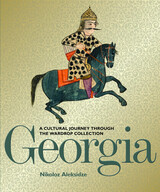 Georgia: A Cultural Journey through the Wardrop Collection
Nikoloz Aleksidze
Bodleian Library Publishing, 2018 When Marjory Wardrop joined her diplomat brother Oliver in Georgia in 1894, the two siblings found themselves witnessing the birth pangs of a modern nation. Recognizing the significance of these transformative years, they actively participated in the work of Ilia Chavchavadze and other leaders of the independence movement, which culminated in Georgia’s declaration of independence in 1918.
Becoming increasingly fascinated by Georgian history and culture, the Wardrops gathered a significant collection of manuscripts dating from the eleventh to the twentieth century, including a seventeenth-century manuscript of Georgia’s national epic poem The Man in the Panther’s Skin, which Marjory famously translated. Through the items of the Waldrop collection—manuscripts, royal charters, correspondence, notebooks, and a draft of the 1918 declaration of independence—Nikoloz Aleksidze narrates a history of Georgian literature and culture, moving from epic and folk tales, to the Georgian Church’s battle against persecution, to the political activism of women in Georgia at the end of the nineteenth century.
Richly illustrated with rare and previously unpublished images from the collection, this book offers unique insight into Georgian culture and political history through the remarkable lens of an eccentric English diplomat and his talented sister.
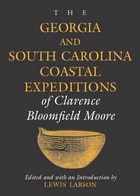 The Georgia and South Carolina Coastal Expeditions of Clarence Bloomfield Moore
Clarence Bloomfield Moore, edited by Lewis Larson
University of Alabama Press, 1998 A Dan Josselyn Memorial Publication
This facsimile edition of Moore's Georgia and South Carolina expeditions includes an extensive new introduction from Georgia's senior archaeologist.
This compilation of Clarence Bloomfield Moore's investigations along the rich coastal and river drainages of Georgia and South Carolina makes
available in a single volume valuable works published a century ago. By modern standards Moore's excavation techniques were crude, but his results were nothing less than spectacular. He recorded data with care, and much information can be learned from his works. In some cases his publications are the only documentation extant for sites that have since been destroyed. In one case, relic collectors had destroyed six mounds at Mason's Plantation—the largest Mississippian center in the Savannah River valley—by the time Moore visited the site in 1897. Moore also documented prehistoric urn burials, a ritual widely practiced in eastern North America but more frequently on the Gulf Coastal Plain
of Alabama and coastal sites in Georgia and South Carolina. In the introduction, Lewis Larson discusses Moore's investigations within the framework of the current understanding of Georgia and South Carolina coastal archaeological chronology.
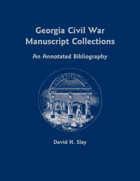 Georgia Civil War Manuscript Collections: An Annotated Bibliography
David H. Slay
University of Alabama Press, 2011 This book provides historians and genealogists with a one-stop guide to every Civil War–related manuscript collection stored in Georgia’s many repositories. With this guide in hand, researchers will no longer spend countless hours pouring through online catalogs, emailing archivists, and wondering if they have exhausted every lead in their pursuit of firsthand information about the war and the experiences of those who lived through and were impacted by it. In assembling the first state-specific bibliography to be compiled since the Indiana and Illinois bibliographies were assembled for the Civil War Centennial in the 1960s, David Slay has expanded the scope of this survey to include works relating to women, African Americans, and social history, as well as the letters and diaries of soldiers who fought in the war, reflecting society’s evolving understanding and interest in this defining period of American life. In addition, this compilation is not confined to material produced from 1861 to 1865, but also includes collections spanning the lives of prominent Civil War figures, making it an invaluable source for biographers. Organized by institution, Georgia Civil War Manuscript Collections has many time-saving features, all designed to increase efficiency of research. Each collection description contains the title and catalog number used in the holding institution. Where possible, collection descriptions have been improved upon, providing the researcher with information beyond what is listed in the holding institution’s card catalog and finding aid. It also cross-references duplicate collections that are held in two or more institutions as microfilm or photocopies. Simply put, Georgia Civil War Manuscript Collections takes the mystery out of Civil War research in Georgia.
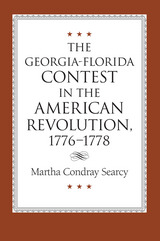 The Georgia Florida Contest
Martha C. Searcy
University of Alabama Press, 1985 Almost from the time of Georgia’s settlement by Oglethorpe in 1733, both Georgians and Carolinians had made periodic unsuccessful attempts to conquer the Spanish Castillo San Marcos in St. Augustine; and during the American Revolution (in 1776, 1777, and 1778) the rebels tried without success to take the fortification, which was then a British stronghold. Each of the three expeditions was less successful than the preceding one, and between the formal campaigns vicious partisan warfare between loyalists and rebels devastated much of the area between the Altamaha and St. Johns rivers. This book presents a detailed history of the three Georgia-Florida campaigns. Indecisive and lacking the glamour of either the contemporary campaigns in the North, or the later campaigns in the South, they appeared isolated from the mainstream of the revolutionary struggle. The rebels were handicapped by divided command, personal quarrels, difficult terrain, and miserable weather. While Searcy emphasizes the military aspects of the period, she also treats the conflict between civil and military authorities, the effects of war on the civilian populace, and the interaction of economic matters with military affairs. Her work clarifies the importance of these military activities in the subsequent British strategy in the occupation of Georgia and the Carolinas.
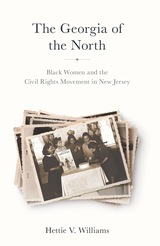 The Georgia of the North: Black Women and the Civil Rights Movement in New Jersey
Hettie V. Williams
Rutgers University Press, 2024 The Georgia of the North is a historical narrative about Black women and the long civil rights movement in New Jersey from the Great Migration to 1954. Specifically, the critical role played by Black women in forging interracial, cross-class, and cross-gender alliances at the local and national level and their role in securing the passage of progressive civil rights legislation in the Garden State is at the core of this book. This narrative is largely defined by a central question: How and why did New Jersey’s Black leaders, community members, and women in particular, affect major civil rights legislation, legal equality, and integration a decade before the Brown v. Board of Education, Topeka, Kansas decision? In this analysis, the history of the early Black freedom struggle in New Jersey is predicated on the argument that the Civil Rights Movement began in New Jersey, and that Black women were central actors in this struggle.
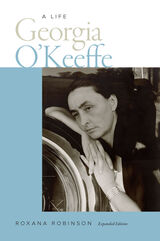 Georgia O'Keeffe: A Life
Roxana Robinson
Brandeis University Press, 2020 One of the greatest and most admired artists of the twentieth century, Georgia O’Keeffe led a life rich in intense relationships—with family, friends, and especially with fellow artist Alfred Stieglitz. Her extraordinary accomplishments, such as the often eroticized flowers, bones, stones, skulls, and pelvises she painted with such command, are all the more remarkable when seen in the context of the struggle she waged between the rigorous demands of love and work.
When Roxana Robinson’s definitive biography of O’Keeffe was first published in 1989, it received rave reviews and was named a New York Times Notable Book of the Year. This new edition features a new foreword by the author setting O’Keefe in an artistic context over the last thirty years since the book was first published, as well as previously unpublished letters of the young O’Keeffe to her lover, Arthur MacMahon. It also relates the story of Robinson’s own encounter with the artist. As interest in O’Keeffe continues to grow among museum-goers and scholars alike, this book remains indispensable for understanding her life and art.
 Georgia: Pawn in the New Great Game
Per Gahrton
Pluto Press, 2010 The 2008 Ossetia War underlined the fact that Georgia is caught in a political struggle between East and West. Per Gahrton analyses American and Russian policy towards the country and provides a firsthand account of the Rose Revolution of 2003, its origin and aftermath.
The book traces the increasing US involvement in Georgia and the Russian reaction of anger, sanctions and, eventually, invasion. Gahrton's analysis is based on interviews with key politicians and his experience as the rapporteur of the European Parliament on South Caucasus. At centre stage is the growing opposition against authoritarian aspects of President Mikheil Saakashvili’s regime and the mysterious death of Prime Minister Zhvania in 2005. The book also asks if the Rose Revolution was a conspiracy or a genuine popular uprising.
This truly authoritative account of Georgia is a must for students studying international relations in the aftermath of The Cold War.
 Geospatial Intelligence: Origins and Evolution
Robert M. Clark
Georgetown University Press A riveting introduction to the complex and evolving field of geospatial intelligence.
Although geospatial intelligence is a term of recent origin, its underpinnings have a long and interesting history. Geospatial Intelligence: Origins and Evolution shows how the current age of geospatial knowledge evolved from its ancient origins to become ubiquitous in daily life across the globe. Within that framework, the book weaves a tapestry of stories about the people, events, ideas, and technologies that affected the trajectory of what has become known as GEOINT.
Author Robert M. Clark explores the historical background and subsequent influence of fields such as geography, cartography, remote sensing, photogrammetry, geopolitics, geophysics, and geographic information systems on GEOINT. Although its modern use began in national security communities, Clark shows how GEOINT has rapidly extended its reach to other government agencies, NGOs, and corporations. This global explosion in the use of geospatial intelligence has far-reaching implications not only for the scientific, academic, and commercial communities but for a society increasingly reliant upon emerging technologies. Drones, the Internet of things, and cellular devices transform how we gather information and how others can collect that information, to our benefit or detriment.
 Gerald Gray's Wife and Lily: A Novel
Susan Petigru King
Duke University Press, 1993 Susan Petigru King wrote and published virtually all of her novels and short stories just before and during the American civil war, although her fiction deals neither with slavery nor sectional politics. Set in her native Charleston and its surrounding plantations, King's novels explore the social life and sexual politics of South Carolina's privileged antebellum elite. In the tradition of nineteenth-century domestic novels, King's writings chronicle courtships and marriages, love and jealousy. The republication of these long-neglected novels will introduce contemporary readers to the imaginative power of an important southern American woman writer.
Lily, King's best known novel, was originally published by Harper and Brothers in 1855. In this work, King skewers the rituals of courtship that propel its wealthy young heroine toward marriage and a melodramatic death. Gerald Gray's Wife, King's last novel, plays out the ironies of a plain woman who survives—but barely—the revelations that destroy her seemingly perfect marriage and acquired beauty. In both novels, women's jealousies and men's deceptions are the forces that propel King's often satirical pen. Largely lacking the moral instruction so common among nineteenth-century domestic novelists, King's novels are differentiated by their critical perspective on women's position, their exploration of themes of failure and frustration, and their focus on the drawing room and ballroom rather than the kitchen and nursery.
Gerald R. Ford: An Honorable Life
James Cannon
University of Michigan Press, 2013 “Not since Harry Truman succeeded Franklin D. Roosevelt twenty-nine years earlier had the American people known so little about a man who had stepped forward from obscurity to take the oath of office as President of the United States.”
—from Chapter 4 This is a comprehensive narrative account of the life of Gerald Ford written by one of his closest advisers, James Cannon. Written with unique insight and benefiting from personal interviews with President Ford in his last years, Gerald R. Ford: An Honorable Lifeis James Cannon’s final look at the simple and honest man from the Midwest.
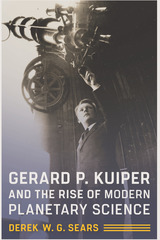 Gerard P. Kuiper and the Rise of Modern Planetary Science
Derek W. G. Sears
University of Arizona Press, 2019 Astronomer Gerard P. Kuiper ignored the traditional boundaries of his subject. Using telescopes and the laboratory, he made the solar system a familiar, intriguing place. “It is not astronomy,” complained his colleagues, and they were right. Kuiper had created a new discipline we now call planetary science.
Kuiper was an acclaimed astronomer of binary stars and white dwarfs when he accidentally discovered that Titan, the massive moon of Saturn, had an atmosphere. This turned our understanding of planetary atmospheres on its head, and it set Kuiper on a path of staggering discoveries: Pluto was not a planet, planets around other stars were common, some asteroids were primary while some were just fragments of bigger asteroids, some moons were primary and some were captured asteroids or comets, the atmosphere of Mars was carbon dioxide, and there were two new moons in the sky, one orbiting Uranus and one orbiting Neptune.
He produced a monumental photographic atlas of the Moon at a time when men were landing on our nearest neighbor, and he played an important part in that effort. He also created some of the world’s major observatories in Hawai‘i and Chile. However, most remarkable was that the keys to his success sprang from his wartime activities, which led him to new techniques. This would change everything.
Sears shows a brilliant but at times unpopular man who attracted as much dislike as acclaim. This in-depth history includes some of the twentieth century’s most intriguing scientists, from Harold Urey to Carl Sagan, who worked with—and sometimes against—the father of modern planetary science. Now, as NASA and other space agencies explore the solar system, they take with them many of the ideas and concepts first described by Gerard P. Kuiper.
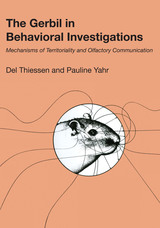 The Gerbil in Behavioral Investigations: Mechanisms of Territoriality and Olfactory Communication
By Del Thiessen and Pauline Yahr
University of Texas Press, 1977 In this comprehensive account of olfactory communication and territorial behavior in the Mongolian gerbil, Del Thiessen and PaulineYahr provide the first detailed study of the neurological and physiological mechanisms that control these basic functions. In addition to explaining the links between hormones, genes, olfactory cues, and territorial acts, they also offer a more general picture of gerbil behavior, as well as a brief look at other mammalian species that communicate social status by way of olfactory messages. Territorial behavior, as defined by the authors, includes all acts that are restricted to a particular area and are crucial for successful reproduction. In the Mongolian gerbil, and probably in other mammals as well, territoriality is controlled by sex hormones acting on specific areas of the central nervous system. Hormones from the gonads apparently act in the brain by altering the genetic apparatus controlling biochemicals used in neural communication. Without these hormones, the animal is socially inert and unable to transmit genes to the next generation. The authors conclude from the results of over ten years of investigation that the most complex social interactions depend on the integrity of the hormone system and its constant tuning by olfactory stimuli. The book incorporates a review of all previously known studies of gerbil behavior and representative data for many other scent-marking species. A stereotaxic brain atlas for the gerbil is a feature that will be especially helpful to other researchers. The book's eclectic nature should make it valuable to anyone concerned with territorial behavior, hormones and behavior, or brain processes, as well as to those who are specifically interested in the Mongolian gerbil.
 Gerhard Richter: A Life in Painting
Dietmar Elger
University of Chicago Press, 2010 Gerhard Richter is one of the most important and influential artists of the post-war era. For decades he has sought innovative ways to make painting more relevant, often through a multifaceted dialogue with photography. Today Richter is most widely recognized for the photo-paintings he made during the 1960s that rely on images culled from mass media and pop culture. Always fascinated with the limits and uncertainties of representation, he has since then produced landscapes, abstractions, glass and mirror constructions, prints, sculptures, and installations. Though Richter has been known in the United States for quite some time, the highly successful retrospective of his work at the MoMA in 2002 catapulted him to unprecedented fame. Enter noted curator Dietmar Elger, who here presents the first biography of this contemporary artist. Written with full access to Richter and his archives, this fascinating book offers unprecedented insight into his life and work. Elger explores Richter’s childhood in Nazi Germany; his years as a student and mural painter in communist East Germany; his time in the West during the turbulent 1960s and ’70s, when student protests, political strife, and violence tore the Federal Republic of Germany apart; and his rise to international acclaim during the 1980s and beyond. Richter has always been a difficult personality to parse and the seemingly contradictory strands of his artistic practice have frustrated and sometimes confounded critics. But the extensive interviews on which this book is based disclose a Richter who is far more candid, personal, and vivid than ever before. The result is a book that will be the foundational portrait of this artist for years to come.
Gerhard von Rad and the Study of Wisdom Literature
Timothy J. Sandoval
SBL Press, 2022 Gerhard von Rad's study of biblical wisdom literature in Weisheit in Israel (1970) is widely regarded as one of the most important studies in the field of ancient Israelite wisdom literature. More than fifty years later, contributors to Gerhard von Rad and the Study of Wisdom Literature reevaluate the significance and shortcomings of the late scholar's work and engage new methods and directions for wisdom studies today. Contributors include George J. Brooke, Ariel Feldman, Edward L. Greenstein, Arthur Jan Keefer, Jennifer L. Koosed, Will Kynes, Christl M. Maier, Timothy J. Sandoval, Bernd U. Schipper, Mark Sneed, Hermann Spieckermann, Anne W. Stewart, Raymond C. Van Leeuwen, Stuart Weeks, and Benjamin G. Wright III. This collection of essays is essential reading not only for specialists in wisdom studies but also for scholars and advanced students of the Hebrew Bible in general.
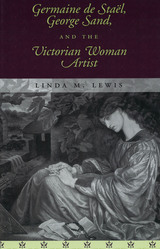 Germaine De Staël, George Sand, and the Victorian Woman Artist
Linda M. Lewis
University of Missouri Press, 2003
By examining literary portraits of the woman as artist, Linda M. Lewis traces the matrilineal inheritance of four Victorian novelists and poets: George Eliot, Elizabeth Barrett Browning, Geraldine Jewsbury, and Mrs. Humphry Ward. She argues that while the male Romantic artist saw himself as god and hero, the woman of genius lacked a guiding myth until Germaine de Staël and George Sand created one. The protagonists of Staël’s Corinne and Sand’s Consuelo combine attributes of the goddess Athena, the Virgin Mary, Virgil’s Sibyl, and Dante’s Beatrice. Lewis illustrates how the resulting Corinne/Consuelo effect is exhibited in scores of English artist-as-heroine narratives, particularly in the works of these four prominent writers who most consciously and elaborately allude to the French literary matriarchs.
In her initial chapter, Lewis explains Corinne’s gift as “l’enthousiasme” and Consuelo’s as “la flamme sacrée.” Corinne uses her influence as a political Sibyl to enter the debates of the Napoleonic era; Consuelo employs her sacred fire as a divine Sophia to indict injustice throughout Europe. Subsequent chapters examine the public and private voices of the Sibyls and Sophias of Victorian fiction, as well as the degree to which their gift demands service to art, to God, and to humankind. The closing chapter studies the waning influence of Staël and Sand in the fin-de-siècle “New Woman” novel.
The core of Lewis’s book is its treatment of the Victorian author and her feminine aesthetics. In each chapter Lewis uncovers the references to Corinne and Consuelo—subtle or overt, serious or facetious—and reveals the resulting tension when an artist invokes a foremother but avoids merging with the mother whom she emulates. The methodology of this bookincludes myth criticism, feminist commentary, and psychoanalytic theory, but its strength lies in Lewis’s close reading of the intertextuality of ten literary works.
Exploring a connection between French and English literature and providing fresh insight, Germaine de Staël, George Sand, and the Victorian Woman Artist makes a major contribution to our understanding of nineteenth-century feminism.
 Germaine Dulac: A Cinema of Sensations
Tami Williams
University of Illinois Press, 2014 Best known for directing the Impressionist classic The Smiling Madame Beudet and the first Surrealist film The Seashell and the Clergyman, Germaine Dulac, feminist and pioneer of 1920s French avant-garde cinema, made close to thirty fiction films as well as numerous documentaries and newsreels. Through her filmmaking, writing, and cine-club activism, Dulac’s passionate defense of the cinema as a lyrical art and social practice had a major influence on twentieth century film history and theory. In Germaine Dulac: A Cinema of Sensations, Tami Williams makes unprecedented use of the filmmaker's personal papers, production files, and archival film prints to produce the first full-length historical study and critical biography of Dulac. Williams's analysis explores the artistic and sociopolitical currents that shaped Dulac's approach to cinema while interrogating the ground breaking techniques and strategies she used to critique conservative notions of gender and sexuality. Moving beyond the director’s work of the 1920s, Williams examines Dulac's largely ignored 1930s documentaries and newsreels establishing clear links with the more experimental impressionist and abstract works of her early period.
This vivid portrait will be of interest to general readers, as well as to scholars of cinema and visual culture, performance, French history, women’s studies, queer cinema, in addition to studies of narrative avant-garde, experimental, and documentary film history and theory.
German After-War Problems
Kuno Francke
Harvard University Press Professor Francke’s book consists of four papers, one new and three originally contributed to The Atlantic Monthly. He has sought in them to discriminate the principal tendencies in the intellectual, moral, and political ferment of post-war Germany and to see what hope they offer for a stabilized nation that will do its task in the world. Though Professor Francke has by no means neglected political and economic movements, he has examined the mind of contemporary Germany mainly through its manifestations in the works of such conspicuous writers and thinkers as Spengler, Thomas Mann, Werfel, and Count Keyserling. He bases his report on personal observation made in 1920, 1923, and 1926. In its lighter aspect, this book will interest everyone who cares for European literature and art; in its deeper aspect, it will interest everyone concerned for the healthful course of world-politics.
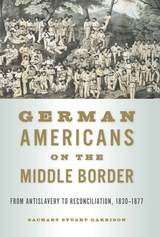 German Americans on the Middle Border: From Antislavery to Reconciliation, 1830–1877
Zachary Stuart Garrison
Southern Illinois University Press, 2020 Before the Civil War, Northern, Southern, and Western political cultures crashed together on the middle border, where the Ohio, Mississippi, and Missouri Rivers meet. German Americans who settled in the region took an antislavery stance, asserting a liberal nationalist philosophy rooted in their revolutionary experience in Europe that emphasized individual rights and freedoms. By contextualizing German Americans in their European past and exploring their ideological formation in failed nationalist revolutions, Zachary Stuart Garrison adds nuance and complexity to their story.
Liberal German immigrants, having escaped the European aristocracy who undermined their revolution and the formation of a free nation, viewed slaveholders as a specter of European feudalism. During the antebellum years, many liberal German Americans feared slavery would inhibit westward progress, and so they embraced the Free Soil and Free Labor movements and the new Republican Party. Most joined the Union ranks during the Civil War.
After the war, in a region largely opposed to black citizenship and Radical Republican rule, German Americans were seen as dangerous outsiders. Facing a conservative resurgence, liberal German Republicans employed the same line of reasoning they had once used to justify emancipation: A united nation required the end of both federal occupation in the South and special protections for African Americans. Having played a role in securing the Union, Germans largely abandoned the freedmen and freedwomen. They adopted reconciliation in order to secure their place in the reunified nation. Garrison’s unique transnational perspective to the sectional crisis, the Civil War, and the postwar era complicates our understanding of German Americans on the middle border.
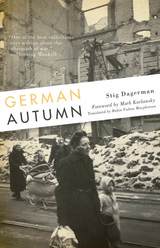 German Autumn
Stig Dagerman
University of Minnesota Press, 2011 In late 1946, Stig Dagerman was assigned by the Swedish newspaper Expressen to report on life in Germany immediately after the fall of the Third Reich. First published in Sweden in 1947, German Autumn, a collection of the articles written for that assignment, was unlike any other reporting at the time. While most Allied and foreign journalists spun their writing on the widely held belief that the German people deserved their fate, Dagerman disagreed and reported on the humanness of the men and women ruined by the war—their guilt and suffering. Dagerman was already a prominent writer in Sweden, but the publication and broad reception of German Autumn throughout Europe established him as a compassionate journalist and led to the long-standing international influence of the book. Presented here in its first American edition with a compelling new foreword by Mark Kurlansky, Dagerman’s essays on the tragic aftermath of war, suffering, and guilt are as hauntingly relevant today amid current global conflict as they were sixty years ago.
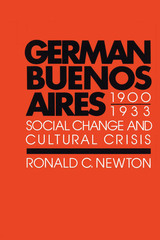 German Buenos Aires, 1900–1933: Social Change and Cultural Crisis
By Ronald C. Newton
University of Texas Press, 1977 This study of the German community of early twentieth-century Buenos Aires is a major contribution to the literature on Argentine history and on the New World immigrant experience. Beginning with the first wave of immigration in the late nineteenth century and continuing to the outbreak of World War II, Ronald C. Newton reconstructs the growth, development, and influence of a powerful foreign population in what was then the largest city in South America. In the three decades before World War I, Argentina became a major food-producing and exporting country. Through the port of Buenos Aires was funneled the bulk of the Pampas’ foodstuff and fiber in one direction and Europe’s capital, technology, and surplus labor in the other. The German speakers made up one of the smaller Western European communities within the Argentine metropolis, but their cultural and economic influence was far out of proportion to their numbers. Based in a large and occupationally diverse middle class, the German community was represented at all social levels. Newton analyzes the experience of this well-demarcated group during a period of rapid demographic growth and increasing pressure to assimilate. He constructs working hypotheses that may be applied and refined in further investigations. The book draws substantially on materials from within the Buenos Aires German community—newspapers, memoirs, the records of associations and welfare agencies—to reconstruct its intense daily life. The author highlights, for instance, the sharp economic reversals German-speaking residents suffered during World War I and shows how their fortunes declined further after continued Germanic immigration in the 1920s. Especially significant is his finding that the German community, which until 1914 had seemed impervious to the currents of Argentine nationalism, became susceptible to assimilation into Argentine society. In concluding chapters Newton demonstrates the way the German economic elite came to terms with the Nazis for opportunistic reasons; thus, the volume also serves as an introduction to the question of Nazism’s diffusion in Argentina.
 German Catholics and Hitler's Wars: A Study in Social Control
Gordon C. Zahn
University of Notre Dame Press, 1988 Prior to the outbreak of World War II, nearly forty thousand German Catholics were involved in the German Catholic Peace League, a movement that caused many people in various countries to seriously reconsider the dimension of pacifism in their faith. During the course of the War, however, many of these same German Catholics raised no serious objection to serving in Germany's armies or swearing allegiance to Adolph Hitler.
First published in 1962, German Catholics and Hitler's Wars created a furor, ultimately causing a serious reevaluation of church-state relationships and, in particular, of the morality of war. This work began as an attempt to understand the demise of the German Catholic Peace League. But because of various factors, including the destruction of vital records, Gordon C. Zahn began to consider the behavior of German Catholics in general and the evidence of their almost total conformity to the war demands of the Nazi regime. Using sociological analysis, he argues convincingly for the existence of a super-effective system of social controls, and of a selection between the competing values of Catholicism and nationalism. Although Zahn never speculates, conclusions are inescapable, chief among them that the traditional Catholic doctrine of the "just war" has ceased to be operative for Catholics in the modern world.
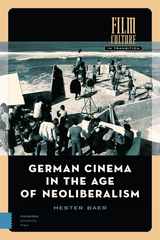 German Cinema in the Age of Neoliberalism
Hester Baer
Amsterdam University Press, 2021 This book presents a new history of German film from 1980-2010, a period that witnessed rapid transformations, including intensified globalization, a restructured world economy, geopolitical realignment, and technological change, all of which have affected cinema in fundamental ways. Rethinking the conventional periodization of German film history, Baer posits 1980-rather than 1989-as a crucial turning point for German cinema's embrace of a new market orientation and move away from the state-sponsored film culture that characterized both DEFA and the New German Cinema. Reading films from East, West, and post-unification Germany together, Baer argues that contemporary German cinema is characterized most strongly by its origins in and responses to advanced capitalism. Informed by a feminist approach and in dialogue with prominent theories of contemporary film, the book places a special focus on how German films make visible the neoliberal recasting of gender and national identities around the new millennium.
German City, Jewish Memory: The Story of Worms
Nils Roemer
Brandeis University Press, 2010 German and Jewish ways of life have been interwoven in Worms, Germany, for over a thousand years. Despite radical changes brought about by expulsion of Jews, wartime devastation, social advancement, cultural and religious renewal, and the Jewish community’s destruction during the Holocaust, the Jewish sites of Worms display a remarkable degree of continuity, which has contributed to the development of distinct urban Jewish cultures, memories, and identities. Tracing the recollection and invention of local Jewish historical traditions in religious commemorations, historical writings, museums, and historical monuments, and the transformation from “sites” to “sights” in the form of tourism from the Middle Ages to the present, Roemer’s rich study of Worms offers a blueprint for historians interested in developing similar studies of cities over the longue durée.
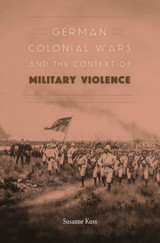 German Colonial Wars and the Context of Military Violence
Susanne Kuss
Harvard University Press, 2017 Germany fought three major colonial wars from 1900 to 1908: the Boxer War in China, the Herero and Nama War in Southwest Africa, and the Maji Maji War in East Africa. Recently, historians have emphasized the role of German military culture in shaping the horrific violence of these conflicts, tracing a line from German atrocities in the colonial sphere to those committed by the Nazis during World War II. Susanne Kuss dismantles such claims in a close examination of Germany’s early twentieth-century colonial experience. Despite acts of unquestionable brutality committed by the Kaiser’s soldiers, she finds no direct path from Windhoek, site of the infamous massacre of the Herero people, to Auschwitz.
In German Colonial Wars and the Context of Military Violence Kuss rejects the notion that a distinctive military culture or ethos determined how German forces acted overseas. Unlike rival powers France and Great Britain, Germany did not possess a professional colonial army. The forces it deployed in Africa and China were a motley mix of volunteers, sailors, mercenaries, and native recruits—all accorded different training and motivated by different factors. Germany’s colonial troops embodied no esprit de corps that the Nazis could subsequently adopt.
Belying its reputation for Teutonic efficiency, the German military’s conduct of operations in Africa and China was improvisational and often haphazard. Local conditions—geography, climate, the size and capabilities of opposing native populations—determined the nature and extent of the violence German soldiers employed. A deliberate policy of genocide did not guide their actions.
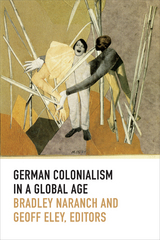 German Colonialism in a Global Age
Bradley Naranch and Geoff Eley, eds.
Duke University Press, 2015 This collection provides a comprehensive treatment of the German colonial empire and its significance. Leading scholars show not only how the colonies influenced metropolitan life and the character of German politics during the Bismarckian and Wilhelmine eras (1871–1918), but also how colonial mentalities and practices shaped later histories during the Nazi era. In introductory essays, editors Geoff Eley and Bradley Naranch survey the historiography and broad developments in the imperial imaginary of the nineteenth and twentieth centuries. Contributors then examine a range of topics, from science and the colonial state to the disciplinary constructions of Africans as colonial subjects for German administrative control. They consider the influence of imperialism on German society and culture via the mass-marketing of imperial imagery; conceptions of racial superiority in German pedagogy; and the influence of colonialism on German anti-Semitism. The collection concludes with several essays that address geopolitics and the broader impact of the German imperial experience.
Contributors. Dirk Bönker, Jeff Bowersox, David Ciarlo, Sebastian Conrad, Christian S. Davis, Geoff Eley, Jennifer Jenkins, Birthe Kundus, Klaus Mühlhahn, Bradley Naranch, Deborah Neill, Heike Schmidt, J. P. Short, George Steinmetz, Dennis Sweeney, Brett M. Van Hoesen, Andrew Zimmerman
German Colonialism Revisited: African, Asian, and Oceanic Experiences
Nina Berman, Klaus Mühlhahn, and Patrice Nganang, editors
University of Michigan Press, 2018 German Colonialism Revisited brings together military historians, art historians, literary scholars, cultural theorists, and linguists to address a range of issues surrounding colonized African, Asian, and Oceanic people’s creative reactions to and interactions with German colonialism. This scholarship sheds new light on local power dynamics; agency; and economic, cultural, and social networks that preceded and, as some now argue, ultimately structured German colonial rule. Going beyond issues of resistance, these essays present colonialism as a shared event from which both the colonized and the colonizers emerged changed.
 German Dis/Continuities, Volume 96
Martin Morris
Duke University Press The twentieth-century history of few countries has been so profoundly marked by breaks, discontinuities, and ruptures as has Germany’s—the radical breaks between the Wilhelmine empire, the Weimar Republic, and the National Socialist period; the “end of history” in 1945 and the dual reconstruction from “Year Zero,” followed by the reunification of post-1989 German. This special issue of South Atlantic Quarterly focuses on the many dimensions of these discontinuities—social, political, cultural, aesthetic, psychological, and physical—as well as the continuities that are equally, if less apparently, implied by them. The contributions presented here include Fredric Jameson’s “Ramblings in Old Berlin,” Günter Grass’s “Lonesome Capitalism,” and Peter Weiss’s “Aesthetics of Resistance.” Among the topics discussed in the volume are the debate over Holocaust memorials in Germany and the significance of their connections to the German past, the problematic continuity that identifies the new unified Germany with the former Federal Republic; the dangers to women posed by the neoliberal project; the legacy of the avant-garde in today’s media theory; Ars nova and Doktor Faustus; nostalgia for the old German Democratic Republic; and reflections on traumatic memory and history as trauma. Contributors. Ulrich Baer, Michael Geyer, Günter Grass, Frigga Haug, Julia Hell, Fredric Jameson, Juliet Koss, Andreas Michel, Martin Morris, Arkady Plotnitsky, Pierra Vidal-Naquet, Peter Weiss, James E. Young
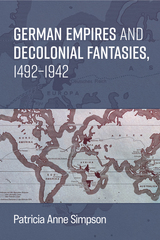 German Empires and Decolonial Fantasies, 1492–1942
Patricia Anne Simpson
University of Michigan Press, 2025 German Empires and Decolonial Fantasies, 1492–1942 investigates the ways German-speaking Europe’s cultural narratives reflect histories of entanglement with the colonial world. Drawing from an impressive range of sources, Patricia Anne Simpson decodes the ironclad colonial logic that reproduces and inflects tropes of the conquistador, scientific explorer, and pioneers. She brings them into dialogue with a cast of historical agents who reimagine the cannibal, the enslaved, the conquered, Indigenous interlocutors, and the ungovernable. Throughout, intersectional attributes of race, gender, ethnicity, and religion reconfigure around shades of European whiteness. Individual chapters explore the Hohenzollern legacy in early modernity; debates about sovereignty and enslavement; recruitment literature, prose and fiction about migration and colonization in Africa and the Americas; and colonial memoirs driven by recolonial fantasies after 1918. German Empires and Decolonial Fantasies advances efforts to decolonize the multiple disciplines that intersect the field of German studies, including literary criticism, history, philosophy, art history, and anthropology.
German Empires and Decolonial Fantasies, 1492–1942 draws from a wide range of sources, from a seventeenth-century Brandenburg fort on the coast of Ghana to a novella about a beleaguered colonial administrator in German East Africa, to advance an interdisciplinary discourse at the nexus of colonial narratives and national imaginaries. Through detailed case studies, Simpson argues for the inclusion of voices that pushed back against imperialist expansion or intervention, as well as those historical actors who disputed the supremacy of whiteness and the persuasive power of German-centric national history.
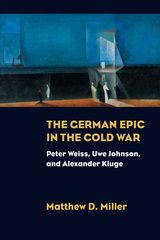 The German Epic in the Cold War: Peter Weiss, Uwe Johnson, and Alexander Kluge
Matthew D. Miller
Northwestern University Press, 2018 Matthew Miller’s The German Epic in the Cold War explores the literary evolution of the modern epic in postwar German literature. Examining works by Peter Weiss, Uwe Johnson, and Alexander Kluge, it illustrates imaginative artistic responses in German fiction to the physical and ideological division of post–World War II Germany.
Miller analyzes three ambitious German-language epics from the second half of the twentieth century: Weiss’s Die Ästhetik des Widerstands (The Aesthetics of Resistance), Johnson’s Jahrestage (Anniversaries), and Kluge’s Chronik der Gefühle (Chronicle of Feelings). In them, he traces the epic’s unlikely reemergence after the catastrophes of World War II and the Shoah and its continuity across the historical watershed of 1989–91, defined by German unification and the dissolution of the Soviet Union.
Building on Franco Moretti’s codification of the literary form of the modern epic, Miller demonstrates the epic’s ability to understand the past; to come to terms with ethical, social, and political challenges in the second half of the twentieth century in German-speaking Europe and beyond; and to debate and envision possible futures.
 The German Experience of Japan’s Treaty Port System: A Case Study of C. Nickel & Co. Ltd., 1860–1923
Prue Holstein
Amsterdam University Press, 2025 German merchants were attracted to the British Empire’s spheres of influence in northeast Asia from the 1700s. Their numbers increased when Britain established a network of treaty ports in China from 1842 and in Japan from 1858. A latecomer to empire, Germany, unified only in 1871, extended its imperial influence in China in 1898. This is the story of two German merchants, Carl Nickel and his relative and successor Christian Holstein, ancestors of the author’s husband, as they built their company, C. Nickel & Co. Ltd. in Kobe into their own waterfront empire contributing to the growth and modernization of the port. This is the story of how they operated in treaty port Japan where the Japanese government could be anti-foreign and obstructionist, partnering with or in opposition to British colleagues presenting new challenges as Holstein navigated World War One and its aftermath until 1923.
 German Film after Germany: Toward a Transnational Aesthetic
Randall Halle
University of Illinois Press, 2007 What is the work of film in the age of transnational production? To answer that question, Randall Halle focuses on the film industry of Germany, one of Europe's largest film markets and one of the world's largest film-producing nations. In the 1990s Germany experienced an extreme transition from a state-subsidized mode of film production that was free of anxious concerns about profit and audience entertainment to a mode dominated by private interest and big capital. At the same time, the European Union began actively drawing together the national markets of Germany and other European nations, sublating their individual significances into a synergistic whole. This book studies these changes broadly, but also focuses on the transformations in their particular national context. It balances film politics and film aesthetics, tracing transformations in financing along with analyses of particular films to describe the effects on the film object itself. Halle concludes that we witness currently the emergence of a new transnational aesthetic, a fundamental shift in cultural production with ramifications for communal identifications, state cohesion, and national economies.
 German Greens
Margit Mayer
Temple University Press, 1998 The Greens have been not only a political force and social conscience for Germany before reunification and after but also an inspiration to political groups and movements in many other countries. The Greens have raised the issues of ecology, gender, and grassroots democracy in protest against government. They have also had the rare opportunity to try converting themselves into a political party that works within the system.
This is a book about their paradoxical situation and about the dilemmas all advocates of change face when they become powerful enough to negotiate with the status quo. The critical essays by German social scientists and activists also provide a detailed picture of the dynamics of the German Greens -- where their support has come from, the nature of the competing factions, and the place of feminism. The editors provide a substantial introduction.
The flavor and texture of the Greens -- including their raucous public arguments and their innovative campaign tactics -- are suggested by the political posters included in the book and by a whole section of primary documents.
The documents and the essays (except for one originally written in English) have been translated from the German. The result is to make available to English-speaking readers a view of a complex movement whose very name and color have become synonymous with social action in favor of the environment and the empowerment of people.
German Historians and the Bombing of German Cities: The Contested Air War
Bas von Benda-Beckmann
Amsterdam University Press, 2015 Today, strategic aerial bombardments of urban areas that harm civilians, at times intentionally, are becoming increasingly common in global conflicts. This book reveals the history of these tactics as employed by nations that initiated aerial bombardments of civilians after World War I and during World War II. As one of the major symbols of German suffering, the Allied bombing left a strong imprint on German society. Bas von Benda-Beckmann explores how German historical accounts reflected debates on postwar identity and looks at whether the history of the air war forms a counternarrative against the idea of German collective guilt. Provocative and unflinching, this study offers a valuable contribution to German historiography.
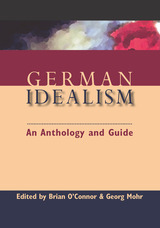 German Idealism: An Anthology and Guide
Edited by Brian O'Connor and Georg Mohr
University of Chicago Press, 2007 Beginning with the publication of Kant’s Critique of Pure Reason and extending through to Hegel’s death, the period known as German Idealism signaled the end of an epoch of rationalism, empiricism, and enlightenment—and the beginning of a new “critical” period of philosophy. The most comprehensive anthology of this vital tradition to date, German Idealism brings together an expansive selection of readings from the tradition’s major figures like Kant, Hegel, Fichte, and Schelling.
Arranged thematically into sections on topics such as the relationships between self and knowledge, freedom and morality, law and state, and nature and science, to name a few, German Idealism discloses many of the contrasts that helped to differentiate each of the tradition’s key thinkers. Each expertly translated text comes with an editorial introduction to guide readers through many of the problems the texts specifically deal with, as well as their historical context.
The most accessible and expansive introduction to German Idealism ever, this anthology will be hailed by instructors and scholars as the most dependable guide to the tradition for years to come.
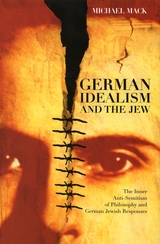 German Idealism and the Jew: The Inner Anti-Semitism of Philosophy and German Jewish Responses
Michael Mack
University of Chicago Press, 2003 In German Idealism and the Jew, Michael Mack uncovers the deep roots of anti-Semitism in the German philosophical tradition. While many have read German anti-Semitism as a reaction against Enlightenment philosophy, Mack instead contends that the redefinition of the Jews as irrational, oriental Others forms the very cornerstone of German idealism, including Kant's conception of universal reason.
Offering the first analytical account of the connection between anti-Semitism and philosophy, Mack begins his exploration by showing how the fundamental thinkers in the German idealist tradition—Kant, Hegel, and, through them, Feuerbach and Wagner—argued that the human world should perform and enact the promises held out by a conception of an otherworldly heaven. But their respective philosophies all ran aground on the belief that the worldly proved incapable of transforming itself into this otherworldly ideal. To reconcile this incommensurability, Mack argues, philosophers created a construction of Jews as symbolic of the "worldliness" that hindered the development of a body politic and that served as a foil to Kantian autonomy and rationality.
In the second part, Mack examines how Moses Mendelssohn, Heinrich Heine, Franz Rosenzweig, and Freud, among others, grappled with being both German and Jewish. Each thinker accepted the philosophies of Kant and Hegel, in varying degrees, while simultaneously critiquing anti-Semitism in order to develop the modern Jewish notion of what it meant to be enlightened—a concept that differed substantially from that of Kant, Hegel, Feuerbach, and Wagner. By speaking the unspoken in German philosophy, this book profoundly reshapes our understanding of it.
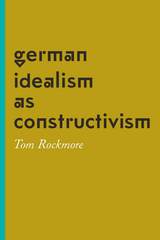 German Idealism as Constructivism
Tom Rockmore
University of Chicago Press, 2016 German Idealism as Constructivism is the culmination of many years of research by distinguished philosopher Tom Rockmore—it is his definitive statement on the debate about German idealism between proponents of representationalism and those of constructivism that still plagues our grasp of the history of German idealism and the whole epistemological project today. Rockmore argues that German idealism—which includes iconic thinkers such as Kant, Fichte, Schelling, and Hegel—can best be understood as a constructivist project, one that asserts that we cannot know the mind-independent world as it is but only our own mental construction of it.
Since ancient Greece philosophers have tried to know the world in itself, an effort that Kant believed had failed. His alternative strategy—which came to be known as the Copernican revolution—was that the world as we experience and know it depends on the mind. Rockmore shows that this project was central to Kant’s critical philosophy and the later German idealists who would follow him. He traces the different ways philosophers like Fichte, Schelling, and Hegel formulated their own versions of constructivism. Offering a sweeping but deeply attuned analysis of a crucial part of the legacy of German idealism, Rockmore reinvigorates this school of philosophy and opens up promising new avenues for its study.
German Idealism: The Struggle against Subjectivism, 1781–1801
Frederick C. Beiser
Harvard University Press, 2002 One of the very few accounts in English of German idealism, this ambitious work advances and revises our understanding of both the history and the thought of the classical period of German philosophy. As he traces the structure and evolution of idealism as a doctrine, Frederick Beiser exposes a strong objective, or realist, strain running from Kant to Hegel and identifies the crucial role of the early romantics—Hölderlin, Schlegel, and Novalis—as the founders of absolute idealism.
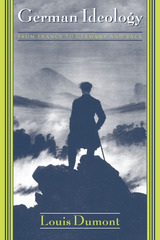 German Ideology: From France to Germany and Back
Louis Dumont
University of Chicago Press, 1995 In this comparative anthropological analysis, Louis Dumont illuminates German and French ideology, European culture, and cultural interaction. His analysis of texts by Troeltsch, Thomas Mann, Goethe, and others, against the background of previously gathered evidence and of French common notions, specify the differences—otherwise frequently but vaguely alluded to—between French and German cultures.
Anyone interested in the fate of national ideology and the concept of the individual will benefit from this radical reinterpretation of modern values and the place of modernity in history.
"What François Furet did for French history, Dumont did for anthropology, turning it away from engaged politics and towards the sober study of the modern age." —Mark Lilla, London Review of Books
"There are many fine things in Dumont's study. Beyond any doubt, his cultural anthropology of the modern spirit highlights some of the key energies of the of the last two centuries. . . . [An] impressive . . . detailed analysis." —Martin Swales, Times Higher Education Supplement
"[An] unsettling, rich, demanding, profound study." —Publishers Weekly
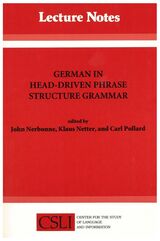 German in Head-Driven Phrase Structure Grammar
Edited by John Nerbonne, Carl Pollard, and Klaus Netter
CSLI, 1993 These essays apply the syntactic theory of Carl Pollard and Ivan Sag—Head-driven Phrase Structure Grammar (HPSG)—to a formal study and analysis of German grammar. A wide variety of fundamental and well-known phenomena in German grammar are addressed, including the German passive and impersonal passive, various Mittelfeld and Vorfeld word-order phenomena (including auxiliary stacking and the distribution of adjuncts), and the structure of phrasal constituents. Linguistic issues include the treatment of idioms, word-order variation and phrase structure constituency, subcategorization, complementation, argument structure, case assignment, lexical rules, and syntactic ambiguity.
The theoretical background for these essays can be found in Information-Based Syntax and Semantics and Head-Driven Phrase Structure Grammar, both by Pollard and Sag and both available from the University of Chicago Press.
 German Invasion Plans for the British Isles, 1940
Edited by the Bodleian Library
Bodleian Library Publishing, 2008 “I have decided to prepare for, and if necessary to carry out, an invasion against England.”—Adolph Hitler, July 16, 1940
Operation Sealion was the codename for the Nazi invasion of Britain that Hitler ordered his generals to plan after France fell in June 1940. Although the plan ultimately never came to fruition, a few sets of the Germans’ detailed strategy documents are housed in the rare book rooms of libraries across Europe. But now the Bodleian Library has made documents from their set available for all to peruse in this unprecedented collection of the invasion planning materials.
The planned operation would have involved landing 160,000 German soldiers along a forty-mile stretch of coast in southeast England. Packets of reconnaissance materials were put together for the invading forces, and the most intriguing parts are now reproduced here. Each soldier was to be given maps and geographical descriptions of the British Isles that broke down the country by regions, aerial photographs pinpointing strategic targets, an extensive listing of British roads and rivers, strategic plans for launching attacks on each region, an English dictionary and phrase book, and even a brief description of Britain’s social composition.
Augmenting the fascinating documents is an informative introduction that sets the materials in their historical and political context. A must-have for every military history buff, German Invasion Plans for the British Isles, 1940 is a remarkable revelation of the inner workings of Hitler’s most famous unrealized military campaign.
German Jerusalem: The Remarkable Life of a German-Jewish Neighborhood in the Holy City
Thomas Sparr
Haus Publishing, 2024 The fascinating history of German Jews who built a community just outside Jerusalem.
In the 1920s, before the establishment of Israel, a group of German Jews settled in a garden city on the outskirts of Jerusalem. During World War II, their quiet community, nicknamed Grunewald on the Orient, emerged as both an immigrant safe haven and a lively expatriate hotspot, welcoming many famous residents including poet-playwright Else Lasker-Schüler, historian Gershom Scholem, and philosopher Martin Buber. It was an idyllic setting, if fraught with unique tensions on the fringes of the long-divided holy city. After the war, despite the weight of the Shoah, the neighborhood miraculously repaired shattered bonds between German and Israeli residents. In German Jerusalem, Thomas Sparr opens up the history of this remarkable community and the forgotten borderland they called home.
 German Jews Beyond Judaism
George L. Mosse, With a critical introduction by David J. Sorkin
University of Wisconsin Press, 2025 First published in 1985, German Jews Beyond Judaism is George L. Mosse’s sweeping exploration of German-Jewish secular identity across the nineteenth and twentieth centuries. In Germany, Jews were emancipated at a time when cultural education was becoming an integral part of German society. They felt a powerful urge to find their Jewish substance within German culture and thus craft an identity as both Germans and Jews. Mosse argues that they did so by adopting the concept of Bildung―the idea of intellectual and moral self-cultivation―combined with key Enlightenment ideals of human potential, individualism, and the connection between knowledge and morality through aesthetics. He traces how Jewish artists, writers, and thinkers actively sought to participate in German culture through popular culture, scholarship, and political activity. Despite the eventual dissolution of German-Jewish dialogue due to the emergence of a virulently racist nationalism, important Jewish heritage emerged as a result of this attempt to integrate both identities.
German Jews Beyond Judaism was, in Mosse’s own estimation, his “most personal book, almost a confession of faith.” David J. Sorkin’s new critical introduction illustrates how Mosse’s life and values both shaped and exemplified his historical analysis and offers potential meanings of his intellectual legacy for the present day.
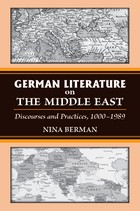 German Literature on the Middle East: Discourses and Practices, 1000-1989
Nina Berman
University of Michigan Press, 2013 German Literature on the Middle East explores the dynamic between German-speaking and Middle Eastern states and empires from the time of the Crusades to the end of the Cold War. This insightful study illuminates the complex relationships among literary and other writings on the one hand, and economic, social, and political processes and material dimensions on the other. Focusing on German-language literary and nonfiction writings about the Middle East (including historical documents, religious literature, travel writing, essays, and scholarship), Nina Berman evaluates the multiple layers of meaning contained in these works by emphasizing the importance of culture contact; a wide web of political, economic, and social practices; and material dimensions as indispensible factors for the interpretive process. This analysis of literary and related writing reveals that German views about the Middle East evolved over the centuries and that various forms of action toward the Middle East differed substantially as well. Ideas about religion, culture, race, humanism, nation, and modernity, which emerged successively but remain operative to this day, have fashioned Germany's changed attitudes toward the Middle East. Exploring the interplay between textual discourses and social, political, and economic practices and materiality, German Literature on the Middle East offers insights that challenge accepted approaches to the study of literature, particularly approaches that insist on the centrality of the linguistic construction of the world. In addition, Berman presents evidence that the German encounter with the Middle East is at once distinct and yet at the same time characterized by patterns shared with other European countries. By addressing the individual nature of the German encounter in the larger European context, this study fills a considerable gap in current scholarship. The interdisciplinary approach of German Literature on the Middle East will be of interest to the humanities in general, and specifically to scholars of German studies, comparative literature, Middle Eastern studies, and history. Nina Berman is Professor of Comparative Studies at The Ohio State University. Jacket image: Map of Europe by Giovanni Magini, from his “Geography.” Venice, [1598]. From the University of Michigan Map Library. Political Map of the World, April 2008. From the University of Texas Perry-Castañeda Library, Map Collection.
 German Memorials, Motifs, and Meanings: A Cultural History in Bronze, Wood, and Stone
Jennifer Hansen-Glucklich
University of Massachusetts Press, 2025 German Memorials, Motifs, and Meanings offers a unique cultural history of German memorialization. The book focuses not on a single, isolated era, but rather on enduring memorial motifs—enchanted stones, magical trees, raised fists, stone circles, and similar evocative symbols derived from myth, folklore, Christianity, national iconography, and post-Holocaust imagery. It thus takes a long-duration perspective, sweeping across the centuries to explore abiding themes such as death, rebirth, and redemption; violence and reconciliation; and sacrifice, identity, and community. Along with a consideration of the historical and social circumstances of each memorial and its motifs, author Jennifer Hansen-Glucklich answers the questions of why and how these cultural markers survive the passage of time and how they endure amidst cultural, social, and political upheavals that include the rise and fall of empires, catastrophes of war and occupation, and genesis of new national identities. She uniquely focuses on lesser-known or unknown memorials found either in smaller German cities or tucked away in villages and hamlets.
These memorials tell colorful, often ambiguous and problematic stories in contrast to the vaunted monuments of Germany’s post-WWII era, such as Berlin’s Memorial to the Murdered Jews of Europe. Through vivid descriptions and deep analysis of the narratives and aesthetics of key monuments and motifs, Hansen-Glucklich details the remarkable story of German memorial culture from medieval times to the present day.
 German Memorials, Motifs, and Meanings: A Cultural History in Bronze, Wood, and Stone
Jennifer Hansen-Glucklich
University of Massachusetts Press, 2025 German Memorials, Motifs, and Meanings offers a unique cultural history of German memorialization. The book focuses not on a single, isolated era, but rather on enduring memorial motifs—enchanted stones, magical trees, raised fists, stone circles, and similar evocative symbols derived from myth, folklore, Christianity, national iconography, and post-Holocaust imagery. It thus takes a long-duration perspective, sweeping across the centuries to explore abiding themes such as death, rebirth, and redemption; violence and reconciliation; and sacrifice, identity, and community. Along with a consideration of the historical and social circumstances of each memorial and its motifs, author Jennifer Hansen-Glucklich answers the questions of why and how these cultural markers survive the passage of time and how they endure amidst cultural, social, and political upheavals that include the rise and fall of empires, catastrophes of war and occupation, and genesis of new national identities. She uniquely focuses on lesser-known or unknown memorials found either in smaller German cities or tucked away in villages and hamlets.
These memorials tell colorful, often ambiguous and problematic stories in contrast to the vaunted monuments of Germany’s post-WWII era, such as Berlin’s Memorial to the Murdered Jews of Europe. Through vivid descriptions and deep analysis of the narratives and aesthetics of key monuments and motifs, Hansen-Glucklich details the remarkable story of German memorial culture from medieval times to the present day.
German Monetary Theory, 1905-1933
Howard Sylvester Ellis
Harvard University Press Addressed primarily to the specialist in money and banking theory, this book is nevertheless easily intelligible to the general economist and to the layman acquainted with the outstanding English books in the field. It is unique in that it is the first attempt to present a general synopsis of any contemporary foreign literature in monetary theory. The author has had in mind two main purposes, to both of which he has devoted equal care: the first is to make available in summary form the content of a large literature from which many students are debarred by the obstacle of language or time; the second is to present critical comparisons and appraisals of its outcome in the light of monetary science generally.
 The German Officer’s Boy
Harlan Greene
University of Wisconsin Press, 2005 What really happened that afternoon in November 1938, when the young Polish Jew walked into the German embassy in Paris and shots rang out? The immediate consequence was concrete: Nazi Germany retaliated with the "Night of Broken Glass," recognized as the beginning of the Holocaust. Lost and overlooked in the aftermath is the arresting story of Herschel Grynszpan, the confused teenager whose murder of Ernst vom Rath was used to justify Kristallnacht. In this historical novel, award-winning writer Harlan Greene may be the first author to take the Polish Jew at his word. Historians have tried to explain away Herschel Grynszpan's claim that he was involved in a love affair with vom Rath; Greene, instead, traces the lives of the underprivileged and persecuted Herschel Grynszpan and the wealthy German diplomat Ernst vom Rath as they move inevitably towards their ill-fated affair. In spare, vivid, and compelling prose, Greene imagines their world, their relationship, and their last horrific encounter, as they tried to wrest love and meaning from a world that would itself soon disappear in a whirlwind of disaster and madness.
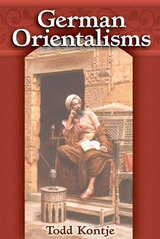 German Orientalisms
Todd Kontje
University of Michigan Press, 2004 Todd Kontje's German Orientalisms offers a fresh examination of the role of the East in the "Kontje has pulled off the amazing feat of a grand narrative: from the epic literature of the Middle Ages to very recent texts on the emerging multicultural Germany. Kontje's grand narrative, it should be noted, is not at all simplistic or reductionistic. He gets at the individual texts in complex ways, and he can tease out multidimensional features of the German texts' treatments of the 'East.' Nonetheless, he displays an enviable erudition and scholarship, tracing lines through centuries when most scholars today limit themselves to narrow specialties."
-Russell Berman, Stanford University
"Intellectually rigorous and conceptually nuanced, Todd Kontje's German Orientalisms is a valuable contribution to the debate on identity politics in German cultural history. Through an erudite and insightful analysis of the German fictions of a broadly defined 'Orient' from the Middle Ages to the present, Kontje illustrates how German literature situated itself within a 'symbolic geography,' whose coordinates are defined by both its representations of the Orient and its affiliation with the Occident. German Orientalisms offers not only an admirable synthesis of the scholarship on German linguistic and cultural nationalism but also sophisticated interpretive strategies for a better understanding of our perceptions and misconceptions of alterity."
-Azade Seyhan, Bryn Mawr College
"This is a fascinating topic, and the book opens new scholarly vistas. In an age of increased specialization, Kontje takes a macro view, looking at German literature almost
from its beginnings to the present, from Wolfram to Özdamar. He also has the courage to link his well-researched work to topics like globalization, the culture wars, and canon formation. He doesn't merely proclaim literature's importance, he shows by example how the literary imagination-creative as it is, dodging dogmatism, and able to confound ideologies-can thrive in an era of cultural studies."
-Sara Friedrichsmeyer, University of Cincinnati
Todd Kontje's German Orientalisms offers a fresh examination of the role of the East in German literary imagination, ranging from the Middle Ages to the present. In its wide historical sweep, this book offers important new insights into many of the most famous writers in the German language, from Goethe to Thomas Mann to Günter Grass.
Building on Edward Said's Orientalism-which defined Orientalism as a form of Western knowledge directly linked to imperial power-Kontje offers a more nuanced version as seen through the lens of German literature of the last thousand years.
Said's focus was on British and French Orientalists-two nations with colonial interests in the East. Germany was different in that it had no stake in the Orient. Far from diminishing an Orientalist perspective, however, the absence of a German empire in the East produced a peculiarly German brand of Orientalism, one in which German writers alternated between identification with the rest of Europe and allying themselves with parts of the East against the West.
Above all, Kontje asks how German writers conceived of their place in "the land of the center" (das Land der Mitte) and how their literary works help to create the imagined community of the German nation.
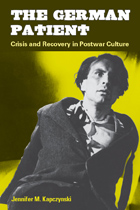 The German Patient: Crisis and Recovery in Postwar Culture
Jennifer M. Kapczynski
University of Michigan Press, 2010 The German Patient takes an original look at fascist constructions of health and illness, arguing that the idea of a healthy "national body"---propagated by the Nazis as justification for the brutal elimination of various unwanted populations---continued to shape post-1945 discussions about the state of national culture. Through an examination of literature, film, and popular media of the era, Jennifer M. Kapczynski demonstrates the ways in which postwar German thinkers inverted the illness metaphor, portraying fascism as a national malady and the nation as a body struggling to recover. Yet, in working to heal the German wounds of war and restore national vigor through the excising of "sick" elements, artists and writers often betrayed a troubling affinity for the very biopolitical rhetoric they were struggling against. Through its exploration of the discourse of collective illness, The German Patient tells a larger story about ideological continuities in pre- and post-1945 German culture. Jennifer M. Kapczynski is Assistant Professor of Germanic Languages and Literatures at Washington University in St. Louis. She is the coeditor of the anthology A New History of German Cinema. Cover art: From The Murderers Are Among Us (1946). Reprinted courtesy of the Deutsche Kinemathek. "A highly evocative work of meticulous scholarship, Kapczynski's deftly argued German Patient advances the current revaluation of Germany's postwar reconstruction in wholly original and even exciting ways: its insights into discussions of collective sickness and health resonate well beyond postwar Germany."
---Jaimey Fischer, University of California, Davis "The German Patient provides an important historical backdrop and a richly specific cultural context for thinking about German guilt and responsibility after Hitler. An eminently readable and engaging text."
---Johannes von Moltke, University of Michigan "This is a polished, eloquently written, and highly informative study speaking to the most pressing debates in contemporary Germany. The German Patient will be essential reading for anyone interested in mass death, genocide, and memory."
---Paul Lerner, University of Southern California
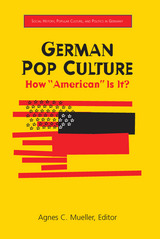 German Pop Culture: How "American" Is It?
Agnes C Mueller, Editor
University of Michigan Press, 2004 German Pop Culture sheds new light on the "Americanization" of German culture during the latter part of the 20th century, with special emphasis on post-Unification literature, music, and film. America and its iconography have been instrumental in defining German political and aesthetic culture, especially since World War II, and most recently in the aftermath of September 11.
Surrounding this indisputable phenomena, questions of the role and place of a "popular" German culture continue to trigger heated debate. Embraced by some as a welcome means to break out of the German monocultural mind-set, American-shaped "pop" culture is rejected by others as "polluting" established values, leveling necessary differentiation, and ultimately being driven by a capitalist consumer society rather than by moral or aesthetic standards.
This collaborative volume addresses a number of intriguing questions: What do Germans envisage when they speak of the "Americanization" of their literature and music? How do artists respond to today's media culture? What does this mean for the current political dimension of German-American relations? Can one speak meaningfully of an "Americanized" German culture? In addressing these and other questions, this work fills a gap in existing scholarship by investigating German popular culture from a multidisciplinary, international perspective.
Contributors to this volume:
Winfried Fluck, Gerd Gemünden, Lutz Koepnick, Barbara Kosta, Sara Lennox, Thomas Meinecke, Uta Poiger, Matthias Politycki, Thomas Saunders, Eckhard Schumacher, Marc Silberman, Frank Trommler, Sabine von Dirke
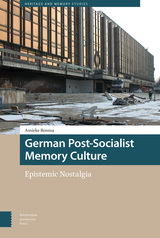 German Post-Socialist Memory Culture: Epistemic Nostalgia
Amieke Bouma
Amsterdam University Press, 2019 After German unification, former officers of the GDR state security service united with GDR professors and cultural managers to establish the East German Committee of Associations (OKV). On the basis of encompassing oral history into this complex web of interest organizations and memory clubs, Bouma argues that these activists are driven by an epistemic nostalgia: a longing for the time when their political understanding of the world was seemingly unchallenged. Far from constituting a ‘second life of the Stasi’, the main goal of OKV associations has been to validate the personal biographies of their activists, against the now prevalent view that the GDR was a ‘state of injustice’. While the OKV quickly adapted to the new legal procedures in post-socialist Germany, their staunch defence of the GDR heritage complicates their relation to SED successor party Die Linke and other radical left parties and associations, even when they share practical goals.
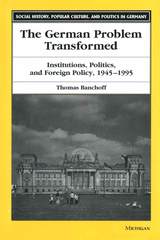 The German Problem Transformed: Institutions, Politics, and Foreign Policy, 1945-1995
Thomas Banchoff
University of Michigan Press, 1999 Does the new, more powerful Germany pose a threat to its neighbors? Does the new German Problem resemble the old? The German Problem Transformed addresses these questions fifty years after the founding of the Federal Republic and ten years after the fall of the Berlin Wall.
Many observers have underscored the reemergence of Germany as Europe's central power. After four decades of division, they contend, Germany is once again fully sovereign; without the strictures of bipolarity, its leaders are free to define and pursue national interests in East and West. From this perspective, the reunified Germany faces challenges not unlike those of its unified predecessor a century earlier.
The German Problem Transformed rejects this formulation. Thomas Banchoff acknowledges post-reunification challenges, but argues that postwar changes, not prewar analogies, best illuminate them. The book explains the transformation of German foreign policy through a structured analysis of four critical postwar junctures: the cold war of the 1950s, the détente of the 1960s and 1970s, the new cold war of the early 1980s, and the post-cold war 1990s. Each chapter examines the interaction of four factors--international structure and institutions, foreign policy ideas, and domestic politics--in driving the direction of German foreign policy at a key turning point.
This book will be of interest to scholars and students of German history, German politics, and European international relations, as well as policymakers and the interested public.
Thomas Banchoff is Assistant Professor of Government, Georgetown University.
German Propaganda and U.S. Neutrality in World War I
Chad R. Fulwider
University of Missouri Press, 2016 In the fading evening light of August 4, 1914, Great Britain’s H.M.S. Telconia set off on a mission to sever the five transatlantic cables linking Germany and the United States. Thus Britain launched its first attack of World War I and simultaneously commenced what became the war’s most decisive battle: the battle for American public opinion. In this revealing study, Chad Fulwider analyzes the efforts undertaken by German organizations, including the German Foreign Ministry, to keep the United States out of the war. Utilizing archival records, newspapers, and “official” propaganda, the book also assesses the cultural impact of Germany’s political mission within the United States and comments upon the perception of American life in Europe during the early twentieth century.
 German Resistance to Hitler
Peter Hoffmann
Harvard University Press, 1988 Fascination with the evil of the Nazi regime has not diminished in the decades since Hitler assumed power in Germany, but the story of internal resistance to Nazism has not been as fully realized as have the innumerable tales of horror. In this compact book Peter Hoffmann examines the growing recognition by some Germans in the 1930s of the malign nature of the Nazi regime, the ways in which these people became involved in the resistance, and the views of those who staked their lives in the struggle against tyranny and murder.
The earliest postwar accounts of the resistance by survivors and witnesses were followed by a variety of investigations and evaluations. Peter Hoffrnann here presents a complete reconstruction of this baffling and intriguing story. After several decades of study of the German resistance to Nazism, he has unlocked the secrets of its inner history. Hoffmann recounts the methods of Hitler's rise to power in the tumultuous days of January and February 1933, the consolidation of his power as a result of the Röhm Massacre in 1934, and his growing criminality as evidenced by the rape of Czechoslovakia and the pogrom of 1938. The author describes the several attempts in 1938 and during the war years to dislodge Hitler from within; the desperation of the luckless opponents over the carnage of war and the mass murders that threatened to engulf them; and finally, the attempt to assassinate Hitler on July 20, 1944. Throughout, he probes the motives of the resisters. Some, for example, found it difficult to justify assassination, even for the purpose of bringing an end to mass killing. Hoffmann examines and discounts the accusation that the principal motive of those who resisted was to preserve their class privileges. The resisters, he concludes, acted not so much in the hope of personal gain as from a moral obligation to challenge the evils they saw before them.
German Seed in Texas Soil: Immigrant Farmers in Nineteenth-Century Texas
By Terry G. Jordan
University of Texas Press, 1966 Terry Jordan explores how German immigrants in the nineteenth century influenced and were influenced by the agricultural life in the areas of Texas where they settled. His findings both support the notion of ethnic distinctiveness and reveal the extent to which German Texans adopted the farming techniques of their Southern Anglo neighbors.
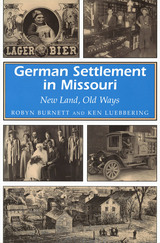 German Settlement in Missouri: New Land, Old Ways
Robyn Burnett & Ken Luebbering
University of Missouri Press, 1996 German immigrants came to America for two main reasons: to seek opportunities in the New World, and to avoid political and economic problems in Europe. In German Settlement in Missouri, Robyn Burnett and Ken Luebbering demonstrate the crucial role that the German immigrants and their descendants played in the settlement and development of Missouri's architectural, political, religious, economic, and social landscape. Relying heavily on unpublished memoirs, letters, diaries, and official records, the authors provide important new narratives and firsthand commentary from the immigrants themselves. Between 1800 and 1919, more than 7 million people came to the United States from German-speaking lands. The German immigrants established towns as they moved up the Missouri River into the frontier, resuming their traditional ways as they settled. As a result, the culture of the frontier changed dramatically. The Germans farmed differently from their American neighbors. They started vineyards and wineries, published German-language newspapers, and entered Missouri politics. The decades following the Civil War brought the golden age of German culture in the state. The populations of many small towns were entirely German, and traditions from the homeland thrived. German-language schools, publications, and church services were common. As the German businesses in St. Louis and other towns flourished, the immigrants and their descendants prospered. The loyalty of the Missouri Germans was tested in World War I, and the anti-immigrant sentiment during the war and the period of prohibition after it dealt serious blows to their culture. However, German traditions had already found their way into mainstream American life. Informative and clearly written, German Settlement in Missouri will be of interest to all readers, especially those interested in ethnic history.
German Social Democracy, 1905–1917: The Development of the Great Schism
Carl E. Schorske
Harvard University Press, 1983 No political parties of present-day Germany are separated by a wider gulf than the two parties of labor, one democratic and reformist, the other totalitarian and socialist-revolutionary. Social Democrats and Communists today face each other as bitter political enemies across the front lines of the Cold War; yet they share a common origin in the Social Democratic Party of Imperial Germany. How did they come to go separate ways? By what process did the old party break apart? How did the prewar party prepare the ground for the dissolution of the labor movement in World War I, and for the subsequent extension of Leninism into Germany? To answer these questions is the purpose of Carl Schorske’s study.
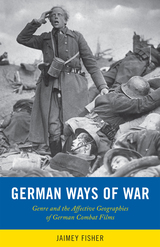 German Ways of War: The Affective Geographies and Generic Transformations of German War Films
Jaimey Fisher
Rutgers University Press, 2022 German Ways of War deploys theories of space, mobility, and affect to investigate how war films realize their political projects. Analyzing films across the decades, from the 1910s to 2000s, German Ways of War addresses an important lacuna in media studies: while scholars have tended to focus on the similarities between cinematic looking and weaponized targeting -- between shooting a camera and discharging a gun – this book argues that war films negotiate spaces throughout that frame their violence in ways more revealing than their battle scenes. Beyond that well-known intersection of visuality and violence, German Ways of War explores how the genre frames violence within spatio-affective operations. The production of novel spaces and evocation of new affects transform war films, including the genre’s manipulation of mobility, landscape, territory, scales, and topological networks. Such effects amount to what author Jaimey Fisher terms the films’ “affective geographies” that interweave narrative-generated affects, spatial depictions, and political processes.
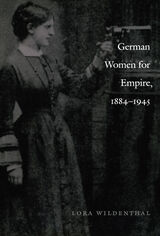 German Women for Empire, 1884-1945
Lora Wildenthal
Duke University Press, 2001 When Germany annexed colonies in Africa and the Pacific beginning in the 1880s, many German women were enthusiastic. At the same time, however, they found themselves excluded from what they saw as a great nationalistic endeavor. In German Women for Empire, 1884–1945 Lora Wildenthal untangles the varied strands of racism, feminism, and nationalism that thread through German women’s efforts to participate in this episode of overseas colonization.
In confrontation and sometimes cooperation with men over their place in the colonial project, German women launched nationalist and colonialist campaigns for increased settlement and new state policies. Wildenthal analyzes recently accessible Colonial Office archives as well as mission society records, periodicals, women’s memoirs, and fiction to show how these women created niches for themselves in the colonies. They emphasized their unique importance for white racial “purity” and the inculcation of German culture in the family. While pressing for career opportunities for themselves, these women also campaigned against interracial marriage and circulated an image of African and Pacific women as sexually promiscuous and inferior. As Wildenthal discusses, the German colonial imaginary persisted even after the German colonial empire was no longer a reality. The women’s colonial movement continued into the Nazi era, combining with other movements to help turn the racialist thought of the late-nineteenth and early-twentieth centuries into the hierarchical evaluation of German citizens as well as colonial subjects.
Students and scholars of women’s history, modern German history, colonial politics and culture, postcolonial theory, race/ethnicity, and gender will welcome this groundbreaking study.
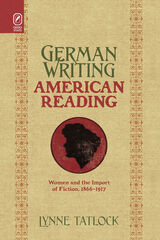 German Writing, American Reading: Women and the Import of Fiction, 1866–1917
Lynne Tatlock
Ohio State University Press, 2012 In postbellum America, publishers vigorously reprinted books that were foreign in origin, and Americans thus read internationally even at a moment of national consolidation. A subset of Americans’ international reading—nearly 100 original texts, approximately 180 American translations, more than 1,000 editions and reprint editions, and hundreds of thousands of books strong—comprised popular fiction written by German women and translated by American women. German Writing, American Reading: Women and the Import of Fiction, 1866–1917 by Lynne Tatlock examines the genesis and circulation in America of this hybrid product over four decades and beyond. These entertaining novels came to the consumer altered by processes of creative adaptation and acculturation that occurred in the United States as a result of translation, marketing, publication, and widespread reading over forty years. These processes in turn de-centered and disrupted the national while still transferring certain elements of German national culture. Most of all, this mass translation of German fiction by American women trafficked in happy endings that promised American readers that their fondest wishes for adventure, drama, and bliss within domesticity and their hope for the real power of love, virtue, and sentiment could be pleasurably realized in an imagined and quaintly old-fashioned Germany—even if only in the time it took to read a novel.
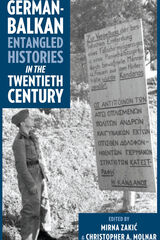 German-Balkan Entangled Histories in the Twentieth Century
Christopher A. Molnar and Mirna Zakic
University of Pittsburgh Press, 2020 This volume brings together a diverse group of scholars from North America and Europe to explore the history and memory of Germany’s fateful push for power in the Balkans during the era of the two world wars and the long postwar period. Each chapter focuses on one or more of four interrelated themes: war, empire, (forced) migration, and memory. The first section, “War and Empire in the Balkans,” explores Germany’s quest for empire in Southeast Europe during the first half of the century, a goal that was pursued by economic and military means. The book’s second section, “Aftershocks and Memories of War,” focuses on entangled German-Balkan histories that were shaped by, or a direct legacy of, Germany’s exceptionally destructive push for power in Southeast Europe during World War II. German-Balkan Entangled Histories in the Twentieth Century expands and enriches the neglected topic of Germany’s continued entanglements with the Balkans in the era of the world wars, the Cold War, and today.
 Germania, USA: Social Change in New Ulm, Minnesota
Noel Iverson
University of Minnesota Press, 1967
Germania, USA was first published in 1967. Minnesota Archive Editions uses digital technology to make long-unavailable books once again accessible, and are published unaltered from the original University of Minnesota Press editions.
An unusual community in southern Minnesota, New Ulm, a town of about 12,000 inhabitants, is the subject of this sociological study. New Ulm was founded in 1856 by a group of German immigrants who came to the United States as refugees from the revolution of 1848 in Germany. They were members of the Turnverein, a society of liberal thinkers who were a political minority in Germany. In founding New Ulm they established a "utopian" ethnic community, became the town's status elite, and for a long time monopolized its economic, political, and cultural life.
Professor Iverson analyzes four aspects of sociological change in the community—class, status, power, and assimilation. Each aspect is viewed according to the differences found between two generations of the upper status group, the Turners, and two corresponding generations of non-Turners.
In addition to its substantive contribution to our knowledge of ethnic settlements, the study demonstrates a gain in methodological precision over many earlier studies of ethnic communities. Its chief methodological innovation is in the use of scales to verify and measure the changing structure of class, status, and power, and to gauge the extent of assimilation.
The book is of interest not only to sociologists, especially those concerned with the study of community change, but also to political scientists interested in the study of community power structures. Also, the methodology will be instructive to those interested in the design of community studies.
 Germanic Accentology
Anatoly Liberman
University of Minnesota Press, 1982 Germanic Accentology was first published in 1982. Minnesota Archive Editions uses digital technology to make long-unavailable books once again accessible, and are published unaltered from the original University of Minnesota Press editions. The Scandinavian languages are among the few living Indo-European languages that possess a ramified system of special tones or accents. Such accents are widespread in the languages of Africa and Asia (creating, for example, the singsong character of Chinese and Vietnamese), but in the vast territory occupied by the Indo-European family only the Scandinavian languages, some German dialects, Lithuanian, Latvian, and Serbo- Croatian have similar accetologies. The function and origin of the Scandinavian accents are central problems facing linguists and are the issues that Anatoly Liberman confronts in this book. Liberman uses the methods of synchronic and diachronic phonology to explore the current status of Scandinavian accentology and to reconstruct its historical development. In the first, synchronic, group of chapters he analyzes the accents and accent-like phenomena in all the modern Scandinavian languages, comparing the literary languages with spoken dialects, and drawing from all of the published descriptions of and theories about Scandinavian prosody. In the final, diachronic, chapter he presents a new hypothesis on the origins of Scandinavian accentology based upon his descriptive material. Throughout, his theoretical approach is that of a functionalist.
The Germanic Languages: Origins and Early Dialectal Interrelations
Hans Frede Nielsen
University of Alabama Press, 1989 A revised and translated version of De germanske sprog. Baggrund og gruppe'ring (Odense University Press, 1979), which has been out of print for several years
The book is especially concerned with the grouping of the Germanic languages: with the research history of this much-debated question and with a discussion of the methods applied to past attempts and indeed applicable to future research in the field.
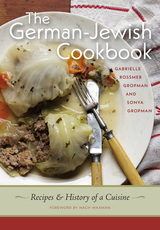 The German-Jewish Cookbook: Recipes and History of a Cuisine
Gabrielle Rossmer Gropman and Sonya Gropman
Brandeis University Press, 2017 This cookbook features recipes for German-Jewish cuisine as it existed in Germany prior to World War II, and as refugees later adapted it in the United States and elsewhere. Because these dishes differ from more familiar Jewish food, they will be a discovery for many people. With a focus on fresh, seasonal ingredients, this indispensable collection of recipes includes numerous soups, both chilled and hot; vegetable dishes; meats, poultry, and fish; fruit desserts; cakes; and the German version of challah, Berches. These elegant and mostly easy-to-make recipes range from light summery fare to hearty winter foods. The Gropmans—a mother-daughter author pair—have honored the original recipes Gabrielle learned after arriving as a baby in Washington Heights from Germany in 1939, while updating their format to reflect contemporary standards of recipe writing. Six recipe chapters offer easy-to-follow instructions for weekday meals, Shabbos and holiday meals, sausage and cold cuts, vegetables, coffee and cake, and core recipes basic to the preparation of German-Jewish cuisine. Some of these recipes come from friends and family of the authors; others have been culled from interviews conducted by the authors, prewar German-Jewish cookbooks, nineteenth-century American cookbooks, community cookbooks, memoirs, or historical and archival material. The introduction explains the basics of Jewish diet (kosher law). The historical chapter that follows sets the stage by describing Jewish social customs in Germany and then offering a look at life in the vibrant émigré community of Washington Heights in New York City in the 1940s and 1950s. Vividly illustrated with more than fifty drawings by Megan Piontkowski and photographs by Sonya Gropman that show the cooking process as well as the delicious finished dishes, this cookbook will appeal to readers curious about ethnic cooking and how it has evolved, and to anyone interested in exploring delicious new recipes.
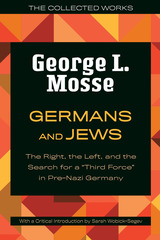 Germans and Jews: The Right, the Left, and the Search for a "Third Force" in Pre-Nazi Germany
George L. Mosse
University of Wisconsin Press, 2023 Originally published in 1970, Germans and Jews brings together George L. Mosse’s thoughts on a critical time in German history when thinkers on both the left and the right shared a common goal. In the late nineteenth and early twentieth centuries, intellectuals across the political spectrum aimed to solve the problems of contemporary society by creating a force that would eliminate both state Marxism and bourgeois society: a “third force” beyond communism and capitalism. This pervasive turn in ideology had profound effects on German history. In Mosse’s reading, left-wing political efforts became increasingly unrelated to reality, while the right finally discovered in fascism the force it had been seeking.
This innovative perspective has implications for understanding not only the rise of fascism and Nazism in Germany but also the rise and fall of the New Left in the United States and Europe, which was occurring at the time of Mosse’s writing. A new critical introduction by Sarah Wobick-Segev, research associate at the University of Hamburg, places Mosse’s work in its historical and intellectual contexts and draws lessons for students and scholars today.
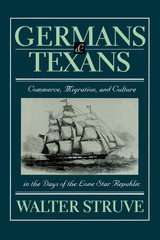 Germans and Texans: Commerce, Migration, and Culture in the Days of the Lone Star Republic
By Walter Struve
University of Texas Press, 1996 During the brief history of the Republic of Texas (1836-1845), over 10,000 Germans emigrated to Texas. Perhaps best remembered today are the farmers who settled the Texas Hill Country, yet many of the German immigrants were merchants and businesspeople who helped make Galveston a thriving international port and Houston an early Texas business center. This book tells their story. Drawing on extensive research on both sides of the Atlantic, Walter Struve explores the conditions that led nineteenth-century Europeans to establish themselves on the North American frontier. In particular, he traces the similarity in social, economic, and cultural conditions in Germany and the Republic of Texas and shows how these similarities encouraged German emigration and allowed some immigrants to prosper in their new home. Particularly interesting is the translation of a collection of letters from Charles Giesecke to his brother in Germany which provide insight into the business and familial concerns of a German merchant and farmer. This wealth of information illuminates previously neglected aspects of intercontinental migration in the nineteenth century. The book will be important reading for a wide public and scholarly audience.
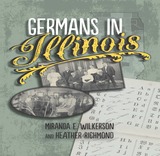 Germans in Illinois
Miranda E. Wilkerson and Heather Richmond
Southern Illinois University Press, 2019 This engaging history of one of the largest ethnic groups in Illinois explores the influence and experiences of German immigrants and their descendants from their arrival in the middle of the nineteenth century to their heritage identity today. Coauthors Miranda E. Wilkerson and Heather Richmond examine the primary reasons that Germans came to Illinois and describe how they adapted to life and distinguished themselves through a variety of occupations and community roles.
The promise of cheap land and fertile soil in rural areas and emerging industries in cities attracted three major waves of German-speaking immigrants to Illinois in search of freedom and economic opportunities. Before long the state was dotted with German churches, schools, cultural institutions, and place names. German churches served not only as meeting places but also as a means of keeping language and culture alive. Names of Illinois cities and towns of German origin include New Baden, Darmstadt, Bismarck, and Hamburg. In Chicago, many streets, parks, and buildings bear German names, including Altgeld Street, Germania Place, Humboldt Park, and Goethe Elementary School. Some of the most lively and ubiquitous organizations, such as Sängerbunde, or singer societies, and the Turnverein, or Turner Society, also preserved a bit of the Fatherland.
Exploring the complex and ever-evolving German American identity in the growing diversity of Illinois’s linguistic and ethnic landscape, this book contextualizes their experiences and corrects widely held assumptions about assimilation and cultural identity. Federal census data, photographs, lively biographical sketches, and newly created maps bring the complex story of German immigration to life. The generously illustrated volume also features detailed notes, suggestions for further reading, and an annotated list of books, journal articles, and other sources of information.
Germans in Michigan
Jeremy W. Kilar
Michigan State University Press, 2002 Germans are the largest ancestral group in Michigan, representing over 2.6 million descendants or 22% of the state’s population. Yet, unlike other immigrant groups, Germans have not retained their linguistic and cultural traditions as part of a distinct ethnic identity. The Bavarian villages of Frankenmuth and Gaylord stand as testaments to the once proud and vigorous German communities that dotted both rural and urban Michigan landscapes. Jeremy W. Kilar explores the social forces that transformed Germans from inward-looking immigrants to citizens in the cultural mainstream. Germans in Michigan is a story of assimilation and renewal and as such reveals the complexities of Americanization and immigration as social forces.
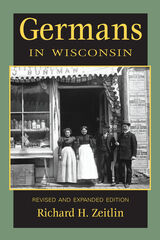 Germans in Wisconsin
Richard H. Zeitlin
Wisconsin Historical Society Press, 2001 Between 1820 and 1910, nearly five and a half million German-speaking immigrants came to the United States in search of new homes, new opportunities, and freedom from European tyrannies. Most settled in the Midwest, and many came to Wisconsin, whose rich farmlands and rising cities attracted three major waves of immigrants. By 1900, German farmers, merchants, manufacturers, editors, and educators—to say nothing of German churches (both Catholic and Lutheran), cultural institutions, food, and folkways—had all set their mark upon Wisconsin. In the most recent census (1990), more than 53 percent of the state's residents considered themselves "German"—the highest of any state in the Union.
In this best-selling book, now with updated text and additional historical photographs, Richard H. Zeitlin describes the values and ideas the Germans brought with them from the Old Country; highlights their achievements on the farm, in the workplace, and in the academy over the course of 150 years; and explains why their impact has been so profound and pervasive.
 Germans into Nazis
Peter Fritzsche
Harvard University Press, 1998 Why did ordinary Germans vote for Hitler? In this dramatically plotted book, organized around crucial turning points in 1914, 1918, and 1933, Peter Fritzsche explains why the Nazis were so popular and what was behind the political choice made by the German people.
Rejecting the view that Germans voted for the Nazis simply because they hated the Jews, or had been humiliated in World War I, or had been ruined by the Great Depression, Fritzsche makes the controversial argument that Nazism was part of a larger process of democratization and political invigoration that began with the outbreak of World War I.
The twenty-year period beginning in 1914 was characterized by the steady advance of a broad populist revolution that was animated by war, drew strength from the Revolution of 1918, menaced the Weimar Republic, and finally culminated in the rise of the Nazis. Better than anyone else, the Nazis twisted together ideas from the political Left and Right, crossing nationalism with social reform, anti-Semitism with democracy, fear of the future with hope for a new beginning. This radical rebelliousness destroyed old authoritarian structures as much as it attacked liberal principles.
The outcome of this dramatic social revolution was a surprisingly popular regime that drew on public support to realize its horrible racial goals. Within a generation, Germans had grown increasingly self-reliant and sovereign, while intensely nationalistic and chauvinistic. They had recast the nation, but put it on the road to war and genocide.
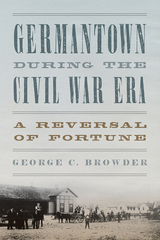 Germantown during the Civil War Era: A Reversal of Fortune
George C. Browder
University of Tennessee Press, 2024 Germantown during the Civil War Era recounts the rise and fall of a nineteenth-century Tennessee town, a community that was not a typical antebellum town in the cotton belt. It’s a case study in how social, economic, and political changes affected them, Black and White.
Before the Civil War, Germantown had become a thriving cultural, commercial, and political center. Its elite and middle-class White families had full access to the cultural and social life of Memphis, as well as local private academies and collegiate institutions that hosted enriching events. Its appealing inns, taverns, and mineral springs allowed for festive social mixing of all classes. As an emerging industrial and commercial center of a rich cotton-growing district in the 1850s, Germantown’s decline after the war would have been unimaginable before the war. Thus, this monograph paints a picture of a vibrant community whose brilliancy was extinguished and almost entirely forgotten.
Yet, Germantown’s economic and political decline, caused by a number of factors, is not the most interesting part of its story. Meticulously documented and richly illustrated with maps and data, this book reveals the impacts of surviving a theater of guerrilla war, of emancipation, of social and political Reconstruction, and a disastrous Yellow Fever epidemic on all of Germantown’s people—psychologically, socially, and culturally. The damage struck far deeper than economic destruction and loss of life. A peaceful and harmonious society crumbled. Germantown during the Civil War Era is sure to be of interest not just to Shelby County residents, or students of the Civil War, but also to anyone interested in the racial and social history of the Volunteer state.
Germany 1945-1990: A Parallel History
Jürgen Weber
Central European University Press, 2004 This book offers lively description and convincing interpretation of the most significant events, cruxes and ongoing themes in German history from the end of the Second World War up to the present. The main features of the last fifty years are not only succinctly and vividly presented and interpreted, they are also placed in the context of international political developments. The chronologies that accompany each chapter record the most important dates, facts and names occurring in the narrative. Jürgen Weber’s text supplies the reader with a combination of vivid descriptive history, easily absorbed chronology, and a reliable reference work for the parallel lives of the two Germanies, a product of the Cold War.
Germany: A Modern History
Marshall Dill
University of Michigan Press, 1961 Studies modern Germany, from its formation to the 1960s
 Germany: A New History
Hagen Schulze
Harvard University Press, 1998 In one concise volume, Hagen Schulze brilliantly conveys the full sweep of German history, from the days of the Romans to the fall of the Berlin Wall. A story two thousand years in the making, it rings with battle, murmurs with intrigue, and hums with the music of everyday life. This richly various legacy, often overshadowed and distorted by the nation's recent past, offers a hopeful answer to the perennial question of what kind of country Germany is and will be.
From the revolt of the indigenous tribes against Roman domination, Schulze leads us through the events that have defined a nation at the center of European culture--the Thirty Years' War and the decline of the Holy Roman Empire, Luther's Reformation and Bismarck's attendance at the birth of modern Germany, the Great War and its aftermath, the nationalistic megalomania under Hitler, the division of the nation after World War II and its reunification. Throughout, we see what these developments have meant for the German people, in the arena of private life and on the stage of world history. A lavish array of illustrations provides a lively counterpoint to Schulze's elegantly written narrative.
As it follows the threads of German language, nationalism, and culture to the present day, this dramatic account provides ample reassurance that recent history will not repeat itself. Germany: A New History will prove indispensable to our understanding of Germany, past and present, and the future of Europe.
 Germany and Its Gypsies: A Post-Auschwitz Ordeal
Gilad Margalit
University of Wisconsin Press, 2002 Historian Gilad Margalit eloquently fills a tragic gap in the historical record with this sweeping examination of the plight of Gypsies in Germany before, during, and since the era of the Third Reich.
Germany and Its Gypsies reveals the painful record of the official treatment of the German Gypsies, a people whose future, in the shadow of Auschwitz, remains uncertain. Margalit follows the story from the heightened racism of the nineteenth century to the National Socialist genocidal policies that resulted in the murder of most German Gypsies, from the shifting attitudes in the two Germanys in 1945 through reunification and up to the present day.
Drawing upon a rich variety of sources, Margalit considers the pivotal historic events, legal arguments, debates, and changing attitudes toward the status of the German Gypsies and shines a vitally important light upon the issue of ethnic groups and their victimization in society. The result is a powerful and unforgettable testament.
 Germany and the Diplomacy of the Financial Crisis, 1931
Edward W. Bennett
Harvard University Press Using documents only recently available, this pioneering book explores the interaction of German, British, French, and American policy at a time when the great depression and the growing political power of the Nazis had created a European crisis—the only such crisis between 1910 and 1941 in which the United States played a leading role.
The author uses contemporary records to rectify the later accounts of such participants as Herbert Hoover, Julius Curtius, and Paul Schmidt. He describes the negotiations of the major powers arising out of the Austro-German plans for a customs union, and relates this problem to the question of terminating reparations and war debts. He shows how the Governor of the Bank of England directed British foreign policy into bitter opposition to France and how the German government sought to exploit the German private debt to Wall Street.
Edward Bennett comes to the conclusion that the Brüning government, contrary to widely held opinion, received fully as much help as it deserved, while the Western powers were already showing the disunity and irresponsibility which proved so disastrous in later years. Although primarily a diplomatic history, this book also offers fresh information on pre-Hitler Germany, MacDonald's Britain, the Hoover administration, and the early career of Pierre Laval.
Germany and the Emigration, 1816-1885
Mack Walker
Harvard University Press The 19th century was an era of wide unrest throughout Europe, when extensive demographic and technological changes decisively altered the character of community life. The result was a wave of emigration to the New World, an event that had social, political, and ideological consequences that are still apparent today. Drawing on much previously unexamined material, Mack Walker concentrates on the German aspects of this phenomenon, describing the nature and background of the emigrants, the influence of their experience on nationalistic and liberal thought, and the specific relation of the emigration to Bismarck's policies of colonial expansion.
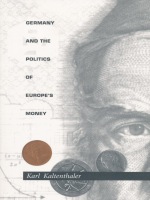 Germany and the Politics of Europe's Money
Karl Kaltenthaler
Duke University Press, 1998 As countries in the European Union struggle to comply with the Maastricht Treaty, the question of monetary integration is at the forefront of European politics. Germany and the Politics of Europe’s Money explores how and why Germany—whose economic power makes it a pivotal player in the European monetary system—has developed inconsistent policies toward European monetary institutions and how international institutions affect domestic politics that, in turn, influence state policies toward these institutions.
Moving away from state-centered and Marxist approaches to the study of the European monetary integration process, Karl Kaltenthaler offers a new analytical framework to assess the dynamics within and among the participating countries. Using official and unofficial documents as well as interviews with players ranging from presidents of the Bundesbank to functionaries in the trade unions, Kaltenthaler argues that the number of decision makers negotiating policy and their accountability to interest groups, political parties, government ministries, and Germany’s central bank have made Germany’s fluctuations in policy inevitable. Germany and the Politics of Europe’s Money examines twenty years of German policy through an analysis of four key episodes: the creation of the European Monetary System, the creation of the Franco-German Economic and Financial Council, the establishment of policy toward the European Monetary Union, and the institutional transformation of the EMS in the 1990s. It thus brings a new understanding to Germany’s dynamic policies and the political forces behind them.
Germany and the Two World Wars
Andreas Hillgruber
Harvard University Press, 1981 One of the most hotly disputed topics in twentieth-century history has been Germany’s share of responsibility—its “guilt”—for the outbreak of the two world wars. In this short, penetrating study, Europe’s leading authority on German power politics clarifies the dispute and offers insight into this central question about modern Germany.
 Germany and the United States: A "Special Relationship"
Hans W. Gatzke
Harvard University Press, 1980 Beginning with Bismarck's forging of a nation with "iron and blood," Gatzke tells of Germany's relentless struggle for domination in Europe and in the West, its defeat in two world wars, its division, East Germany's travail, and West Germany's search for identity as a modern democratic state.
A discerning statement about Germany and other nations, this book reevaluates for the general reader and the historian the impact of rapid industrialization, the origins of the world wars, the question of war guilt, the decade of Weimar democracy, and the rise and fall of Hitler. Gatzke looks anew at the economic miracle in West Germany and the consequences of making prosperity the cornerstone of a new republic.
It is to the realities of these German characteristics as an evolving nation-state that Gatzke relates American foreign policy and perceptions. He recounts the American fluctuations, from favorable to hostile to friendly, as Germany's policies and fortunes changed, and he places the division of Germany in historical perspective.
Germany at the Polls: The Bundestag Elections of the 1980s
Karl H. Cerny, ed.
Duke University Press, 1990 This volume provides systematic information on the campaigns, political parties, and results of the Bundestag elections of 1980, 1983, and 1987. It explores the issues between elections in addition to providing an overview of the campaigns and an analysis of the three election results. The contributors examine the various parties involved—the Christian Democratic Union/Christian Social Union, the Social Democratic Party, the Free Democratic Party, and the Greens. They also analyze the role of the media in the 1980 and 1983 campaigns. Cerny concludes with a general assessment of the wider significance of the three elections for the West German political system. Contributors. Kendall L. Baker, Karl H. Cerny, David P. Conradt, Arthur B. Gunlicks, Alice McGillivray, Peter H. Merkl, Ferdinand Muller-Rommel, Helmut Norpoth, Richard M. Scammon, Donald Schoonmaker, Christian Soe
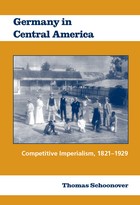 Germany in Central America: Competitive Imperialism, 1821-1929
Thomas Schoonover
University of Alabama Press, 1999 Analyzes the German role in Central American domestic and international relations Using previously untapped resources including private collections, the records of cultural institutions, and federal and state government archives, Schoonover analyzes the German role in Central American domestic and international relations.Of the four countries most active in independent Central America-Britain, the United States, France, and Germany- historians know the least about the full extent of the involvement of the Germans. German colonial expansion was based on its position as an industrialized state seeking economic well-being and security in a growing world market. German leaders were quick to recognize that ties to the cheap labor of overseas countries could compensate for some of the costs and burdens of conceding material and social privileges to their domestic labor force. The Central American societies possessed limited resource bases; smaller and poorly educated populations; and less capital, communications, and technological development than Germany. They saw the borrowing of development as a key to their social, economic, and political progress. Wary Central American leaders also saw the influx of German industrialists as assurance against excessive U.S. presence in their political economies and cultures. Although the simplistic bargain to trade economic development for cheap labor appeared to succeed in the short term, complex issues of German domestic unemployment and social disorder filtered to Central American countries and added to their own burdens. By 1929, Germany had recovered most of its pre-World War I economic position.
 Germany, Propaganda and Total War, 1914-1918
David Welch
Rutgers University Press, 2000 Adolf Hitler, writing in Mein Kampf, was scathing in his condemnation of German propaganda in the First World War, declaring that Germany had failed to recognize propaganda as a weapon of the first order. This despite the fact that propaganda had been regarded, arguably for the first time, as an intrinsic part of the war effort. David Welch has written the first book to fully examine German society — politics, propaganda, public opinion, and total war — in the Great War. Drawing on a wide range of sources — from posters, newspapers, journals, film, parliamentary debates, police and military reports, and private papers — Welch argues that the moral collapse of Germany was due less to the failure to disseminate propaganda than to the inability of the military authorities and the Kaiser to reinforce this propaganda, and to acknowledge the importance of public opinion in forging an effective link between leadership and the people.
Germany, Third Edition: A Short History
Donald S. Detwiler
Southern Illinois University Press, 1999 This new edition of a best-selling history of Germany, originally published in 1976, includes the great watershed of 1989–90 and its aftermath. With twelve maps, a chronology of events, and an updated bibliographical essay, Germany: A Short History provides a thorough introduction to German history from antiquity to the present.
 Germany Transformed: Political Culture and the New Politics
Kendall L. Baker, Russell J. Dalton, and Kai Hildebrandt
Harvard University Press, 1981 A new Germany has come of age, as democratic, sophisticated, affluent, and modern as any other western nation. This remarkable transition in little more than a generation is the central theme of Germany Transformed. Here all the old stereotypes and conclusions are challenged and new research is marshalled to provide a model for an advanced democratic republic.
Kendall Baker, Russell Dalton, and Kai Hildebrandt, working with massive national election returns from 1953 onward, explain the Old Politics of the postwar period, which was based on the “economic miracle” and the security needs of West Germany, and the shift in the past decade to the New Politics, which emphasizes affluence, leisure, the quality of life, and international accommodation. But more than elections are examined. Rather, the authors delineate the transvaluation of the German civic culture as democracy became embedded in the nation’s institutions, political ways, party structures, and citizen interest in governance. By the 1970s the quiescent German of Prussia, the Empire, and the 1930s had become the active and aware democratic westerner.
This is among the most important books about West Germany written since the late 1950s, when the nation, devastated by war and rebuilding its economy and political life, was still struggling with the possibilities of democracy. It is a political history, recounted in enormous detail and with methodological precision, that will change perceptions about Germany and align them with realities. Germany is now an integrated part of a democratic western community of nations, and an understanding of its true condition not only illuminates better the staunch European identity but also is bound to have an impact on American policy.
 Germany Unified and Europe Transformed: A Study in Statecraft
Philip D. Zelikow and Condoleezza Rice
Harvard University Press, 1995 Officials mingled in the lobby of the Oktyabrskaia Hotel--shaking hands, sipping champagne, signing their names--and Germany was united. In this undramatic fashion, the international community closed the book on the drama of divided Germany. But nothing so momentous could be quite so quiet and uncomplicated, as this volume makes strikingly clear. This is the first book to go behind the scenes through access to still not opened archives in many countries. Germany Unified and Europe Transformed discloses the moves and maneuvers that ended the Cold War division of Europe.
Philip Zelikow and Condoleezza Rice, who served in the White House during these years, have combed a vast number of documents and other sources in German and Russian as well as English. They also interviewed the major actors in the drama--George Bush, Hans-Dietrich Genscher, Eduard Shevardnadze, James Baker, Anatoly Chernyayev, Brent Scowcroft, Horst Teltschik, and many others. Their firsthand accounts merge to create a complete, detailed, and powerfully immediate picture of what happened. The book takes us into Gorbachev's world, illuminating why the Soviet leader set such cataclysmic forces in motion in the late 1980s and how these forces outstripped his plans. We follow the tense debates between Soviet and East German officials over whether to crush the first wave of German protesters--and learn that the opening of the Berlin Wall was in fact one of the greatest bureaucratic blunders in human history. The narrative then reveals the battle for the future of East Germany as it took shape between West German Chancellor Helmut Kohl and the reform Communist leader, Hans Modrow--East Germany's "little Gorbachev." Zelikow and Rice show how Kohl and George Bush held off the reactions of governments throughout Europe so that Kohl could awaken East Germans to the possibility of reunification on his terms. Then the battle over the future of the NATO alliance began in earnest.
The drama that would change the face of Europe took place largely backstage, and this book lets us in on the strategies and negotiations, the nerve-racking risks, last-minute decisions, and deep deliberations that brought it off. It is the most authoritative depiction of contemporary statecraft to appear in decades.
 Germany Unified and Europe Transformed: A Study in Statecraft, With a New Preface
Philip D. Zelikow and Condoleezza Rice
Harvard University Press, 1997 Officials mingled in the lobby of the Oktyabrskaia Hotel--shaking hands, sipping champagne, signing their names--and Germany was united. In this undramatic fashion, the international community closed the book on the drama of divided Germany. But nothing so momentous could be quite so quiet and uncomplicated, as this volume makes strikingly clear. This is the first book to go behind the scenes through access to still not opened archives in many countries. Germany Unified and Europe Transformed discloses the moves and maneuvers that ended the Cold War division of Europe.
Philip Zelikow and Condoleezza Rice, who served in the White House during these years, have combed a vast number of documents and other sources in German and Russian as well as English. They also interviewed the major actors in the drama--George Bush, Hans-Dietrich Genscher, Eduard Shevardnadze, James Baker, Anatoly Chernyayev, Brent Scowcroft, Horst Teltschik, and many others. Their firsthand accounts merge to create a complete, detailed, and powerfully immediate picture of what happened. The book takes us into Gorbachev's world, illuminating why the Soviet leader set such cataclysmic forces in motion in the late 1980s and how these forces outstripped his plans. We follow the tense debates between Soviet and East German officials over whether to crush the first wave of German protesters--and learn that the opening of the Berlin Wall was in fact one of the greatest bureaucratic blunders in human history. The narrative then reveals the battle for the future of East Germany as it took shape between West German Chancellor Helmut Kohl and the reform Communist leader, Hans Modrow--East Germany's "little Gorbachev." Zelikow and Rice show how Kohl and George Bush held off the reactions of governments throughout Europe so that Kohl could awaken East Germans to the possibility of reunification on his terms. Then the battle over the future of the NATO alliance began in earnest.
The drama that would change the face of Europe took place largely backstage, and this book lets us in on the strategies and negotiations, the nerve-racking risks, last-minute decisions, and deep deliberations that brought it off. It is the most authoritative depiction of contemporary statecraft to appear in decades.
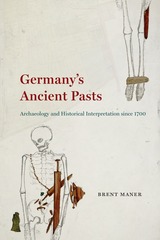 Germany's Ancient Pasts: Archaeology and Historical Interpretation since 1700
Brent Maner
University of Chicago Press, 2018 In Germany, Nazi ideology casts a long shadow over the history of archaeological interpretation. Propaganda, school curricula, and academic publications under the regime drew spurious conclusions from archaeological evidence to glorify the Germanic past and proclaim chauvinistic notions of cultural and racial superiority. But was this powerful and violent version of the distant past a nationalist invention or a direct outcome of earlier archaeological practices? By exploring the myriad pathways along which people became familiar with archaeology and the ancient past—from exhibits at local and regional museums to the plotlines of popular historical novels—this broad cultural history shows that the use of archaeology for nationalistic pursuits was far from preordained.
In Germany’s Ancient Pasts, Brent Maner offers a vivid portrait of the development of antiquarianism and archaeology, the interaction between regional and national history, and scholarly debates about the use of ancient objects to answer questions of race, ethnicity, and national belonging. While excavations in central Europe throughout the eighteenth and nineteenth centuries fed curiosity about the local landscape and inspired musings about the connection between contemporary Germans and their “ancestors,” antiquarians and archaeologists were quite cautious about using archaeological evidence to make ethnic claims. Even during the period of German unification, many archaeologists emphasized the local and regional character of their finds and treated prehistory as a general science of humankind. As Maner shows, these alternative perspectives endured alongside nationalist and racist abuses of prehistory, surviving to offer positive traditions for the field in the aftermath of World War II. A fascinating investigation of the quest to turn pre- and early history into history, Germany’s Ancient Pasts sheds new light on the joint sway of science and politics over archaeological interpretation.
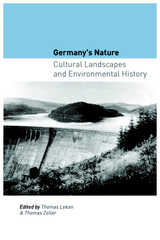 Germany's Nature: Cultural Landscapes and Environmental History
Lekan, Thomas
Rutgers University Press, 2005 Germany boasts one of the strongest environmental records in the world. The Rhine River is cleaner than it has been in decades, recycling is considered a civic duty, and German manufacturers of pollution-control technology export their products around the globe. Yet, little has been written about the country's remarkable environmental history, and even less of that research is available in English.
Now for the first time, a survey of the country's natural and cultural landscapes is available in one volume. Essays by leading scholars of history, geography, and the social sciences move beyond the Green movement to uncover the enduring yet ever-changing cultural patterns, social institutions, and geographic factors that have sustained Germany's relationship to its land.
Unlike the American environmental movement, which is still dominated by debates about wilderness conservation and the retention of untouched spaces, discussions of the German landscape have long recognized human impact as part of the "natural order." Drawing on a variety of sites as examples, including forests, waterways, the Autobahn, and natural history museums, the essays demonstrate how environmental debates in Germany have generally centered on the best ways to harmonize human priorities and organic order, rather than on attempts to reify wilderness as a place to escape from industrial society.
Germany's Nature is essential reading for students and professionals working in the fields of environmental studies, European history, and the history of science and technology.
 Germany's Second Chance: Trust, Justice, and Democratization
Anne Sa’adah
Harvard University Press, 1998 How does a country reconstitute itself as a functioning democracy after a period of dictatorship? The new community may execute, imprison, or temporarily disenfranchise some citizens, but it will be unable to exclude all who supported the fallen regime. Political reconciliation must lay the groundwork for political trust. Democracy offers the compromised--and many who were more than just compromised--a second chance.
In this new book, Anne Sa'adah explores twentieth-century Germany's second chances. Drawing on evidence from intellectual debates, trials, literary works, controversies about the actions of public figures, and partisan competition, Sa'adah analyzes German responses to the problem of reconciliation after 1945 and again after 1989. She depicts the frustrations, moral and political ambiguities, and disappointments inherent to even successful processes of democratization. She constantly underscores the difficult trade-off between achieving a modicum of justice and securing the legitimacy and stability of the new regime. A strategy of reconciliation emphasizing outward conformity to democratic norms and behavior, she argues, has a greater chance of sustaining a new and fragile democracy than do more direct attempts to punish past misdeeds and alter people's inner convictions.
Germany’s Urban Frontiers: Nature and History on the Edge of the Nineteenth-Century City
Kristin Poling
University of Pittsburgh Press, 2020 In an era of transatlantic migration, Germans were fascinated by the myth of the frontier. Yet, for many, they were most likely to encounter frontier landscapes of new settlement and the taming of nature not in far-flung landscapes abroad, but on the edges of Germany’s many growing cities. Germany’s Urban Frontiers is the first book to examine how nineteenth-century notions of progress, community, and nature shaped the changing spaces of German urban peripheries as the walls and boundaries that had so long defined central European cities disappeared. Through a series of local case studies including Leipzig, Oldenburg, and Berlin, Kristin Poling reveals how Germans on the edge of the city confronted not only questions of planning and control, but also their own histories and futures as a community.
Germany's Wild East: Constructing Poland as Colonial Space
Kristin Kopp
University of Michigan Press, 2012 In the 19th and early 20th centuries, representations of Poland and the Slavic East cast the region as a primitive, undeveloped, or empty space inhabited by a population destined to remain uncivilized without the aid of external intervention. These depictions often made direct reference to the American Wild West, portraying the eastern steppes as a boundless plain that needed to be wrested from the hands of unruly natives and spatially ordered into German-administrated units.
While conventional definitions locate colonial space overseas, Kristin Kopp argues that it was possible to understand both distant continents and adjacent Eastern Europe as parts of the same global periphery dependent upon Western European civilizing efforts. However, proximity to the source of aid translated to greater benefits for Eastern Europe than for more distant regions.
 Gernika, 1937: The Market Day Massacre
Xabier Irujo
University of Nevada Press, 2015 On April 26, 1937, a massive aerial attack by German and Italian forces reduced the Basque city of Gernika to rubble and left more than sixteen hundred people dead. Although the assault was initiated as part of a terror bombing campaign by Francoists against Basque Republican forces during the Spanish Civil War, its main intent was to test the effectiveness of the rising German Luftwaffe’s new equipment and strategies.
To produce this detailed analysis of the political and military background of the attack and its subsequent international impact, Xabier Irujo examined archives and official government documents in several countries and conducted numerous interviews with Basques who survived. His account of the assault itself, based on eyewitness reports from both victims and attackers, vividly recalls the horror of that first example of the blitz bombing that served the Germans during the first years of World War II. He reveals the US and British governments’ reaction to the bombing and also discusses efforts to prosecute the perpetrators for war crimes. Irujo relates the ways in which the massacre has been remembered and commemorated in Gernika and throughout the worldwide Basque diaspora.
Gernika, 1937: The Market Day Massacre is an important contribution to the history of the Spanish Civil War and to our understanding of the military strategies and decisions that shaped this war and would later be employed by the Nazis during World War II.
Gernika: Genealogy of a Lie
Xabier Irujo
Sussex Academic Press, 2022 On April 26, 1937, nearly sixty bombers and fighters attacked Gernika. They dropped between 31 and 46 tons of explosive and incendiary bombs on the city center. The desolation was absolute: 85% of the buildings in the town were totally destroyed; more than 2,000 people died in an urban area of less than one square kilometer. Just hours after the destruction of the Basque town, General Franco ordered to attribute authorship of the atrocity to the "Reds" and that remained the official truth until his death in 1975. Gernika was a key event of contemporary European history; its "alternative facts" historiography an exemplar for commentators and historians faced with disentangling contested viewpoints on current military and political conflicts, and too often war crimes and genocide that result.
Gerrard Winstanley: The Digger's Life and Legacy
John Gurney
Pluto Press, 2012 'The power of property was brought into creation by the sword', so wrote Gerrard Winstanley (1609-1676) – Christian Communist, leader of the Diggers movement and bête noire of the landed aristocracy. Despite being one of the great English radicals, Winstanley remains unmentioned in today's lists of 'great Britons'.
John Gurney reveals the hidden history of Winstanley and his movement. As part of the radical ferment which swept England at the time of the civil war, Winstanley led the Diggers in taking over land and running it as 'a common treasury for all' – provoking violent opposition from landowners. Gurney also guides us through Winstanley's writings, which are among the most remarkable prose writings of his age.
Gerrard Winstanley: The Digger's Life and Legacy is a must read for students of English history and all those seeking to re-claim the commons today.
 Gerry Studds: America's First Openly Gay Congressman
Mark Robert Schneider
University of Massachusetts Press, 2017 Representative Gerry Studds served the Massachusetts South Shore, Cape Cod, and New Bedford congressional district from 1973 to 1997. During his first decade in the House he helped pass legislation that protected American fishermen from overfishing by international boats and limited President Ronald Reagan's wars in Central America.
The defining moment of his career, however, came in 1983, when he was censured by the House for having had an affair with a page ten years previously. On the floor of Congress, Studds confessed to having behaved inappropriately and then courageously declared that he was a gay man—becoming the country's first openly gay member of Congress. Defying all expectations, Studds won reelection in a bruising campaign. For the rest of his career, he remained loyal to his constituents' concerns while also championing AIDS research and care, leading the effort in Congress to allow gays and lesbians to serve in the military, and opposing the Defense of Marriage Act. Once a deeply conflicted man, he ultimately found a balance between his public service and his private life, which included a happy, legally recognized marriage.
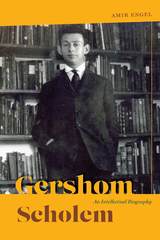 Gershom Scholem: An Intellectual Biography
Amir Engel
University of Chicago Press, 2017 Gershom Scholem (1897–1982) was ostensibly a scholar of Jewish mysticism, yet he occupies a powerful role in today’s intellectual imagination, having influential contact with an extraordinary cast of thinkers, including Hans Jonas, Martin Buber, Walter Benjamin, Hannah Arendt, and Theodor Adorno. In this first biography of Scholem, Amir Engel shows how Scholem grew from a scholar of an esoteric discipline to a thinker wrestling with problems that reach to the very foundations of the modern human experience.
As Engel shows, in his search for the truth of Jewish mysticism Scholem molded the vast literature of Jewish mystical lore into a rich assortment of stories that unveiled new truths about the modern condition. Positioning Scholem’s work and life within early twentieth-century Germany, Palestine, and later the state of Israel, Engel intertwines Scholem’s biography with his historiographical work, which stretches back to the Spanish expulsion of Jews in 1492, through the lives of Rabbi Isaac Luria and Sabbatai Zevi, and up to Hasidism and the dawn of the Zionist movement. Through parallel narratives, Engel touches on a wide array of important topics including immigration, exile, Zionism, World War One, and the creation of the state of Israel, ultimately telling the story of the realizations—and failures—of a dream for a modern Jewish existence.
Gershom Scholem: From Berlin to Jerusalem and Back
Noam Zadoff
Brandeis University Press, 2017 German-born Gerhard (Gershom) Scholem (1897–1982), the preeminent scholar of Jewish mysticism, delved into the historical analysis of kabbalistic literature from late antiquity to the twentieth century. His writings traverse Jewish historiography, Zionism, the phenomenology of mystical religion, and the spiritual and political condition of contemporary Judaism and Jewish civilization. Scholem famously recounted rejecting his parents’ assimilationist liberalism in favor of Zionism and immigrating to Palestine in 1923, where he became a central figure in the German Jewish immigrant community that dominated the nation’s intellectual landscape in Mandatory Palestine. Despite Scholem’s public renunciation of Germany for Israel, Zadoff explores how the life and work of Scholem reflect ambivalence toward Zionism and his German origins.
Gershom Scholem: Kabbalah and Counter-History, Second Edition
David Biale
Harvard University Press, 1982 Through a lifetime of passionate scholarship, Gershom Scholem (1897–1982) uncovered the “domains of tradition hidden under the debris of centuries” and made the history of Jewish mysticism and messianism comprehensible and relevant to current Jewish thought.
In this paperback edition of his definitive book on Scholem’s work, David Biale has shortened and rearranged his study for the benefit of the general reader and the student. A new introduction and new passages in the main text highlight the pluralistic character of Jewish theology as seen by Scholem, the place of the Kabbalah in debates over Zionism versus assimilation, and the interpretation of Kafka as a Jewish writer.
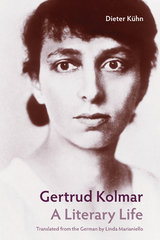 Gertrud Kolmar: A Literary Life
Dieter Kühn
Northwestern University Press, 2013 Linda Marianiello here translates into English for the first time Dieter Kühn’s highly praised and definitive biography of one of Germany’s greatest poets, Gertrud Kolmar. Kolmar carried German-language poetry to new heights, speaking truth in a time when many poets collapsed in the face of increasing Nazi repression. Born Gertrud Käthe Chodziesner in Berlin in 1894, she completed her first collection, Poems, in 1917. She took her pen name, Kolmar, from the name of the town where her family originated.
Kolmar’s third collection of poems appeared in 1938 but soon disappeared in the wake of the overall repression of Jewish authors. At the time, she served as secretary to her father, Ludwig Chodziesner, a prominent lawyer. In 1941, the Nazis compelled her to work in a German armaments factory. Even as a forced laborer, the strength of her poetic voice grew, perhaps reaching its highest level before her deportation to Auschwitz. From gentle nature verses to stirring introspection, these are poems in which we can still find ourselves today. Both she and her father died in Nazi concentration camps, he in 1942, she the following year. The translation of Dieter Kühn’s biography conveys the tragic, yet courageous, life of a great poet to an English-speaking audience.
 Gertrude Stein and the Essence of What Happens
Dana Cairns Watson
Vanderbilt University Press, 2005 In this provocative study, Dana Cairns Watson traces Gertrude Stein's growing fascination with the cognitive and political ramifications of conversation and how that interest influenced her writing over the course of her career. No book in recent decades has illuminated so many of Stein's works so extensively--from the early fiction of The Making of Americans to the poetry of Tender Buttons to her opera libretto The Mother of Us All. Seeking to sustain Stein's lively, pleasant, populist spirit, Watson shows how the writer's playful entanglement of sight and sound--of silent reading and social speaking--reveals the crucial ambiguity by which reading and conversation build communities of meaning, and thus form not only personal relationships but also our very selves and the larger political structures we inhabit. Stein reminds us that the residual properties of words and the implications behind the give-and-take of ordinary conversation offer alternatives to linear structures of social order, alternatives especially precious in times of political oppression. For example, her novels Mrs. Reynolds and Brewsie and Willie, both written in embattled Vichy France, contemplate the speech patterns of totalitarian leaders and the ways in which everyday discourse might capitulate to--or resist--such verbal tyranny. Like recent theorists, Stein recognized the repressiveness of conventional order--carried in language and thus in thought and social organization--but as Watson persuasively shows, she also insisted that the free will of individuals can persist in language and enable change. In the play of literary aesthetics, Stein saw a liberating force.
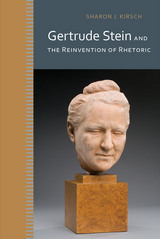 Gertrude Stein and the Reinvention of Rhetoric
Sharon J. Kirsch
University of Alabama Press, 2014 Gertrude Stein is recognized as an iconic and canonical literary modernist. In Gertrude Stein and the Reinvention of Rhetoric, Sharon J. Kirsch broadens our understanding of Stein’s influence to include her impact on the field of rhetoric.
For humanities scholars as well as popular audiences, the relationship between rhetoric and literature remains vexed, in part due to rhetoric’s contemporary affiliation with composition, which makes it separate from, if not subordinate to, the study of literature. Gertrude Stein recognized no such separation, and this disciplinary policing of the study of English has diminished our understanding of her work, Kirsch argues. Stein’s career unfolded at the crossroads of literary composition and rhetorical theory, a site where she alternately challenged, satirized, and reinvented the five classical canons of rhetoric—invention, arrangement, style, memory, and delivery—even as she invented new trajectories of literary experimentation.
Kirsch follows Stein from her days studying composition and philosophy at Harvard through her expatriate years in France, fame in the 1930s, and experience of the Second World War. She frames Stein’s explorations of language as an inventive poetics that reconceived practices and theories of rhetorical invention during a period that saw the rise of literary studies and the decline of rhetorical studies. Through careful readings of canonical and lesser-known works, Kirsch offers a convincing critical portrait of Stein as a Sophistic provocateur who reinvented the canons by making a productive mess of canonical rhetoric and modernist categories of thought.
Readers will find much of interest in Gertrude Stein and the Reinvention of Rhetoric. Kirsch offers myriad insights to scholars of Stein, to those interested in the interdisciplinary intersections of literature, rhetoric, and philosophy, as well as to scholars and students in the field of rhetoric and communication studies. Positioning Stein as a major twentieth-century rhetorical theorist is particularly timely given increasing interest in historical and theoretical resonances between rhetoric and poetics and given the continued lack of recognition for women theorists in rhetorical studies.
Gertrude Stein: The Language That Rises: 1923-1934
Ulla E. Dydo
Northwestern University Press, 2008
The first extensive examination of Stein's notebooks, manuscripts and letters, prepared over a period of twenty years, Gertrude Stein: The Language That Rises asks new questions and explores new ways of reading Stein. This definitive study give us a finely detailed, deeply felt understanding of Stein, the great modernist, throughout one of her most productive periods. From "An Elucidation" in 1923 to Lectures In America in 1934, Ulla E. Dydo examines the process of the making and remaking of Stein's texts as they move from notepad to notebook to manuscript, from an idea to the ultimate refinement of the author's intentions. The result is an unprecedented view of the development of Stein's work, word by word, text by text, and over time.
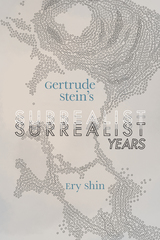 Gertrude Stein's Surrealist Years
Ery Shin
University of Alabama Press, 2020 Examineshow surrealism enriches our understanding of Stein’s writing through its poetics of oppositions
Gertrude Stein’s Surrealist Years brings to life Stein’s surrealist sensibilities and personal values borne from her WWII anxieties, not least of which originated in a dread of anti-Semitism. Stein’s earlier works such as Tender Buttons and Lucy Church Amiably tend to prioritize formal innovations over narrative-building and overt political motifs. However, Ery Shin argues that Stein’s later works engage more with storytelling and life-writing in startling ways—most emphatically and poignantly through the surrealist lens.
Beginning with The Autobiography of Alice B. Toklas and continuing in later works, Stein renders legible her war-torn era’s jarring dystopian energies through narratives filled with hallucinatory visions, teleportation, extreme coincidences, action reversals, doppelgangers, dream sequences spanning both sleeping and waking states, and great whiffs of the occult. Such surrealist gestures are predicated on Stein’s return to the independent clause and, by extension, to plot, characterization, and anecdotes. By summoning the marvelous in a historically situated world, Stein joins her surrealist contemporaries in their own ambivalent crusade on behalf of historiography.
Besides illuminating Stein’s art and life, the surrealist framework developed here brings readers deeper into those philosophical ideas invoked by war. Topics of discussion emphasize how varied Jewish experiences were in Hitler’s Europe, how outliers like Stein can be included in the surrealist project, surrealism’s theoretical bind in the face of WWII, and the age-old question of artistic legacy.
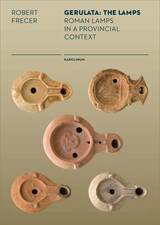 Gerulata: The Lamps: A Survey of Roman Lamps in Pannonia
Robert Frecer
Karolinum Press, 2015 For the ancient Romans, lamps were more than just a way to be able to see in the dark—they were mythical muses, witnesses to secrets, and instruments of the supernatural. Far more familiar to the average Roman than the high art of mosaics, statues, or frescos, lamps created the atmosphere of day-to-day life in the homes, workshops, and public houses of Roman provincial towns.
This catalog brings together for the first time the 210 ancient lamps excavated since 1949 in Bratislava-Rusovce, a suburb of the capital of Slovakia and the site of the ancient Roman settlement of Gerulata. What may appear at first glance as a standard panoply of Roman lamps is comprehensively examined to uncover signs of wear and use, unique personal inscriptions, and exceptional forms. This book reveals the stunning wealth of knowledge that can be gained from the study of lighting devices in this liminal settlement on the tough northern frontier of the Roman Empire.
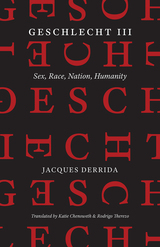 Geschlecht III: Sex, Race, Nation, Humanity
Jacques Derrida
University of Chicago Press, 2020 A significant event in Derrida scholarship, this book marks the first publication of his long-lost philosophical text known only as “Geschlecht III.” The third, and arguably the most significant, piece in his four-part Geschlecht series, it fills a gap that has perplexed Derrida scholars. The series centers on Martin Heidegger and the enigmatic German word Geschlecht, which has several meanings pointing to race, sex, and lineage. Throughout the series, Derrida engages with Heidegger’s controversial oeuvre to tease out topics of sexual difference, nationalism, race, and humanity. In Geschlecht III, he calls attention to Heidegger’s problematic nationalism, his work’s political and sexual themes, and his promise of salvation through the coming of the “One Geschlecht,” a sentiment that Derrida found concerningly close to the racial ideology of the Nazi party.
Amid new revelations about Heidegger’s anti-Semitism and the contemporary context of nationalist resurgence, this third piece of the Geschlecht series is timelier and more necessary than ever. Meticulously edited and expertly translated, this volume brings Derrida’s mysterious and much awaited text to light.
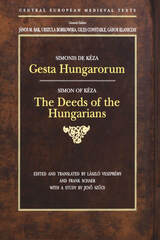 Gesta Hungarorum: The Deeds of the Hungarians
Simon Kézai
Central European University Press, 1999 Simon of Kéza was a court cleric of the Hungarian King, Ladislas IV (1272-1290). He travelled extensively in Italy, France and Germany and culled the epic and poetic material from a broad range of readings.Written between 1282-1285, the Gesta Hungarorum is an ingenious and imaginative historical fiction of prehistory, medieval history and contemporary social history. The author divides Hungarian history into two periods: Hunnish-Hungarian prehistory and Hungarian history, giving a division which persisted in Hungary up to the beginnings of modern historiography. Simon of Kéza provides a vivid retelling of the well known Attila stories, using such lively prose as - ".the battle lasted for 15 days on end, Csaba's army received such a crushing defeat that very few of the Huns or the sons of Attila survived, the river Danube from Sicambria as far as the city of Potentia was swollen with blood and for several days neither men nor animals could drink the water." The book is also significant because of the author's legal-theoretical framework of corporate self government and constitutional law, inspired by French and Italian sources and practice, which made this chronicle become an integral part of Hungarian historiography.
Gesta principum Polonorum: The Deeds of the Princes of the Poles
János M. Bak
Central European University Press, 2003 Written around 1112-1116, The Deeds of the Princes of the Poles is the oldest narrative source from Poland, formerly attributed to 'Gallus,' a French monk. The anonymous author tells the ancient history of Poland down to the reign of Boleslaw III. The chronicle contains valuable information on Poland's relations to her neighbors as well as the political ideas of his time.
Gesta, volume 60 number 2 (Fall 2021)
The University of Chicago Press
University of Chicago Press Journals, 2021 This is volume 60 issue 2 of Gesta. Gesta publishes original research on medieval art and architecture. The journal embraces all facets of artistic production from ca. 300 to ca. 1500 C.E. in every corner of the medieval world.
Gesta, volume 61 number 1 (Spring 2022)
The University of Chicago Press
University of Chicago Press Journals, 2022 This is volume 61 issue 1 of Gesta. Gesta publishes original research on medieval art and architecture. The journal embraces all facets of artistic production from ca. 300 to ca. 1500 C.E. in every corner of the medieval world.
Gesta, volume 61 number 2 (Fall 2022)
The University of Chicago Press
University of Chicago Press Journals, 2022 This is volume 61 issue 2 of Gesta. Gesta publishes original research on medieval art and architecture. The journal embraces all facets of artistic production from ca. 300 to ca. 1500 C.E. in every corner of the medieval world.
Gesta, volume 62 number 1 (Spring 2023)
The University of Chicago Press
University of Chicago Press Journals, 2023 This is volume 62 issue 1 of Gesta. Gesta publishes original research on medieval art and architecture. The journal embraces all facets of artistic production from ca. 300 to ca. 1500 C.E. in every corner of the medieval world.
Gesta, volume 62 number 2 (Fall 2023)
The University of Chicago Press
University of Chicago Press Journals, 2023 This is volume 62 issue 2 of Gesta. Gesta publishes original research on medieval art and architecture. The journal embraces all facets of artistic production from ca. 300 to ca. 1500 C.E. in every corner of the medieval world.
Gesta, volume 63 number 1 (Spring 2024)
The University of Chicago Press
University of Chicago Press Journals, 2024 This is volume 63 issue 1 of Gesta. Gesta publishes original research on medieval art and architecture. The journal embraces all facets of artistic production from ca. 300 to ca. 1500 C.E. in every corner of the medieval world.
Gesta, volume 63 number 2 (Fall 2024)
The University of Chicago Press
University of Chicago Press Journals, 2024 This is volume 63 issue 2 of Gesta. Gesta publishes original research on medieval art and architecture. The journal embraces all facets of artistic production from ca. 300 to ca. 1500 C.E. in every corner of the medieval world.
Gesta, volume 64 number 1 (Spring 2025)
The University of Chicago Press
University of Chicago Press Journals, 2025 This is volume 64 issue 1 of Gesta. Gesta publishes original research on medieval art and architecture. The journal embraces all facets of artistic production from ca. 300 to ca. 1500 C.E. in every corner of the medieval world.
 The Gestation of German Biology: Philosophy and Physiology from Stahl to Schelling
John H. Zammito
University of Chicago Press, 2017 The emergence of biology as a distinct science in the eighteenth century has long been a subject of scholarly controversy. Michel Foucault, on the one hand, argued that its appearance only after 1800 represented a fundamental rupture with the natural history that preceded it, marking the beginnings of modernity. Ernst Mayr, on the other hand, insisted that even the word "biology" was unclear in its meaning as late as 1800, and that the field itself was essentially prospective well into the 1800s.
In The Gestation of German Biology, historian of ideas John Zammito presents a different version of the emergence of the field, one that takes on both Foucault and Mayr and emphasizes the scientific progress throughout the eighteenth century that led to the recognition of the need for a special science. The embrace of the term biology around 1800, Zammito shows, was the culmination of a convergence between natural history and human physiology that led to the development of comparative physiology and morphology—the foundations of biology. Magisterial in scope, Zammito’s book offers nothing less than a revisionist history of the field, with which anyone interested in the origins of biology will have to contend.
Gestuary
Sylvie Kandé
Seagull Books, 2026 A richly imagined, physically charged poetry collection in which history, myth, and protest are transformed into lyrical gestures.
Sylvie Kandé’s Gestuary offers a collection of gestures—of death and life, of tenderness and brutality—that fractures the flow of time. Senegalese riflemen from World War I are juxtaposed with migrants at borders who sew their lips shut in protest over immigration policies. In dream-like sequences, the dead refuse to stay underground and “push against the fence / that swings between our realm and theirs.” Inspired by unexpected sources, including jazz, sculpture, the legacy of the slave trade, proverbs, and elements of Diola culture, Kandé’s poems are rich in musicality and sophisticated syntax, rendered into a lyrical and luminous English by Nancy Naomi Carlson.
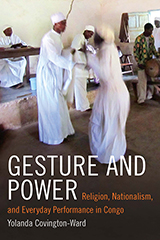 Gesture and Power: Religion, Nationalism, and Everyday Performance in Congo
Yolanda Covington-Ward
Duke University Press, 2016 In Gesture and Power Yolanda Covington-Ward examines the everyday embodied practices and performances of the BisiKongo people of the Lower Congo to show how their gestures, dances, and spirituality are critical in mobilizing social and political action. Conceiving of the body as the center of analysis, a catalyst for social action, and as a conduit for the social construction of reality, Covington-Ward focuses on specific flash points in the last ninety years of Congo's troubled history, when embodied performance was used to stake political claims, foster dissent, and enforce power. In the 1920s Simon Kimbangu started a Christian prophetic movement based on spirit-induced trembling, which swept through the Lower Congo, subverting Belgian colonial authority. Following independence, dictator Mobutu Sese Seko required citizens to dance and sing nationalist songs daily as a means of maintaining political control. More recently, embodied performance has again stoked reform, as nationalist groups such as Bundu dia Kongo advocate for a return to precolonial religious practices and non-Western gestures such as traditional greetings. In exploring these embodied expressions of Congolese agency, Covington-Ward provides a framework for understanding how embodied practices transmit social values, identities, and cultural history throughout Africa and the diaspora.
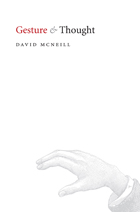 Gesture and Thought
David McNeill
University of Chicago Press, 2005 Gesturing is such an integral yet unconscious part of communication that we are mostly oblivious to it. But if you observe anyone in conversation, you are likely to see his or her fingers, hands, and arms in some form of spontaneous motion. Why? David McNeill, a pioneer in the ongoing study of the relationship between gesture and language, set about answering this question over twenty-five years ago. In Gesture and Thought he brings together years of this research, arguing that gesturing, an act which has been popularly understood as an accessory to speech, is actually a dialectical component of language.
Gesture and Thought expands on McNeill’s acclaimed classic Hand and Mind. While that earlier work demonstrated what gestures reveal about thought, here gestures are shown to be active participants in both speaking and thinking. Expanding on an approach introduced by Lev Vygotsky in the 1930s, McNeill posits that gestures are key ingredients in an “imagery-language dialectic” that fuels both speech and thought. Gestures are both the “imagery” and components of “language.” The smallest element of this dialectic is the “growth point,” a snapshot of an utterance at its beginning psychological stage. Utilizing several innovative experiments he created and administered with subjects spanning several different age, gender, and language groups, McNeill shows how growth points organize themselves into utterances and extend to discourse at the moment of speaking.
An ambitious project in the ongoing study of the relationship of human communication and thought, Gesture and Thought is a work of such consequence that it will influence all subsequent theory on the subject.
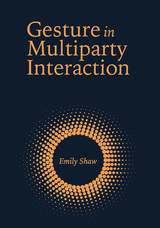 Gesture in Multiparty Interaction
Emily Shaw
Gallaudet University Press, 2018 Gesture in Multiparty Interaction confronts the competing views that exist regarding gesture’s relationship to language. In this work, Emily Shaw examines embodied discourses in American Sign Language and spoken English and seeks to establish connections between sign language and co-speech gesture. By bringing the two modalities together, Shaw illuminates the similarities between certain phenomena and presents a unified analysis of embodied discourse that more clearly captures gesture’s connection to language as a whole.
Shaw filmed Deaf and hearing participants playing a gesture-based game as part of a social game night. Their interactions were then studied using discourse analysis to see whether and how Deaf and hearing people craft discourses through the use of their bodies. This volume examines gesture, not just for its iconic, imagistic qualities, but also as an interactive resource in signed and spoken discourse. In addition, Shaw addresses the key theoretical barriers that prevent a full accounting of gesture’s interface with signed and spoken language. Her study pushes further the notion that language is fundamentally embodied.
 Gestures of Concern
Chris Ingraham
Duke University Press, 2020 In Gestures of Concern Chris Ingraham shows that while gestures such as sending a “Get Well” card may not be instrumentally effective, they do exert an intrinsically affective force on a field of social relations. From liking, sharing, posting, or swiping to watching a TED Talk or wearing an “I Voted” sticker, such gestures operate as much through affective registers as they do through overt symbolic action. Ingraham demonstrates that gestures of concern are central to establishing the necessary conditions for larger social or political change because they give the everyday aesthetic and rhetorical practices of public life the capacity to attain some socially legible momentum. Rather than supporting the notion that vociferous public communication is the best means for political and social change, Ingraham advances the idea that concerned gestures can help to build the affective communities that orient us to one another with an imaginable future in mind. Ultimately, he shows how acts that many may consider trivial or banal are integral to establishing those background conditions capable of fostering more inclusive social or political change.
 Get a Shot of Rhythm and Blues: The Arthur Alexander Story
Richard Younger
University of Alabama Press, 2000 The first book-length biography of an influential country/soul legend whose songs have been recorded by the Beatles, the Rolling Stones, and Bob Dylan. Get a Shot of Rhythm and Blues chronicles the rise, fall, and rebirth of Arthur Alexander, an African American singer-songwriter whose music influenced many of the rock and soul musicians of the 1960s. Although his name is not well known today, Alexander's musical legacy is vast. His 1962 song "You Better Move On" was the first hit to emerge from the fledgling Muscle Shoals FAME studio in Alabama, and his fusion of country and soul and his heartfelt vocals on such songs as "Anna (Go to Him)" and "Every Day I Have to Cry" were revered by musicians including the Beatles, the Rolling Stones, and Bob Dylan, all of whom recorded his songs. Alexander's story is a tragic one, with a brief, redemptive finale. His meteoric rise after the release of "You Better Move On" gave way to lean years caused both by his drug and alcohol abuse and by the mishandling of his career by producers and managers. In 1977, he quit the music business, but his music lived on. In 1992, Alexander returned to
the studio and recorded the critically praised album Lonely Just Like Me. Just three months after the album's release in March 1993, he suffered a heart attack in the offices of his music publisher in Nashville and died three days later. In telling Alexander's story, Richard Younger captures the burgeoning music scenes in Muscle Shoals and Nashville during the 1960s and 1970s and recovers the life of a fascinating musician whose influence was international. Younger's account is enriched by his interviews with more than 200 artists, family members, and friends--such as Rick Hall, Billy Sherrill, Charlie McCoy, Chuck Jackson, Gerry Marsden, and Kris Kristofferson--and includes an abundance of never-before-seen photographs.
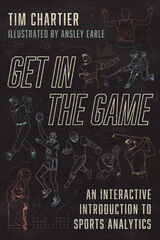 Get in the Game: An Interactive Introduction to Sports Analytics
Tim Chartier
University of Chicago Press, 2022 An award-winning math popularizer, who has advised the US Olympic Committee, NFL, and NBA, offers sports fans a new way to understand truly improbable feats in their favorite games.
In 2013, NBA point guard Steph Curry wowed crowds when he sunk 11 out of 13 three-pointers for a game total of 54 points—only seven other players, including Michael Jordan and Kobe Bryant, had scored more in a game at Madison Square Garden. Four years later, the University of Connecticut women’s basketball team won its hundredth straight game, defeating South Carolina 66–55. And in 2010, one forecaster—an octopus named Paul—correctly predicted the outcome of all of Germany’s matches in the FIFA World Cup. These are surprising events—but are they truly improbable?
In Get in the Game, mathematician and sports analytics expert Tim Chartier helps us answer that question—condensing complex mathematics down to coin tosses and dice throws to give readers both an introduction to statistics and a new way to enjoy sporting events. With these accessible tools, Chartier leads us through modeling experiments that develop our intuitive sense of the improbable. For example, to see how likely you are to beat Curry’s three-pointer feat, consider his 45.3 percent three-point shooting average in 2012–13. Take a coin and assume heads is making the shot (slightly better than Curry at a fifty percent chance). Can you imagine getting heads eleven out of thirteen times? With engaging exercises and fun, comic book–style illustrations by Ansley Earle, Chartier’s book encourages all readers—including those who have never encountered formal statistics or data simulations, or even heard of sports analytics, but who enjoy watching sports—to get in the game.
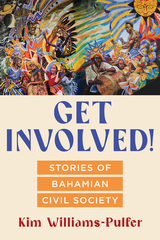 Get Involved!: Stories of Bahamian Civil Society
Kim Williams-Pulfer
Rutgers University Press, 2024 Philanthropy is commonly depicted as a universal practice and is either valued for supporting community transformation or critiqued for limiting social justice. However, dominant definitions and even popular connotations tend to privilege wealthy Western approaches. Using the Caribbean as a rich site of observance and concentrating on the island nation-state of The Bahamas, Get Involved! uncovers the hidden and under-documented activities of “philanthropy from below,” revealing a broader conception of philanthropy and civil society, especially within Black and other historically marginalized populations. Kim Williams-Pulfer draws on narrative analysis from enslavement to the current post-post-colonial moment, depicting the repertoires and practices of primarily Afro-Bahamians through the stories emerging from history (including the transnational observations of Zora Neale Hurston, social movements, and political and social institution building), the arts (from Junkanoo, literature, and visual practices), to the lived experiences of contemporary civil society leaders. Get Involved! shows the long history and continued significance of civil society and philanthropic engagement in The Bahamas, the circum-Caribbean, and the wider African Diaspora.
Junkanoo is the national cultural festival of The Bahamas. It fosters a sense of community pride, identity, companionship, spirituality and unity. Watch a video about Junknoo:
https://www.youtube.com/watch?v=tnMpMesNb1Q&t=14s
|
|
